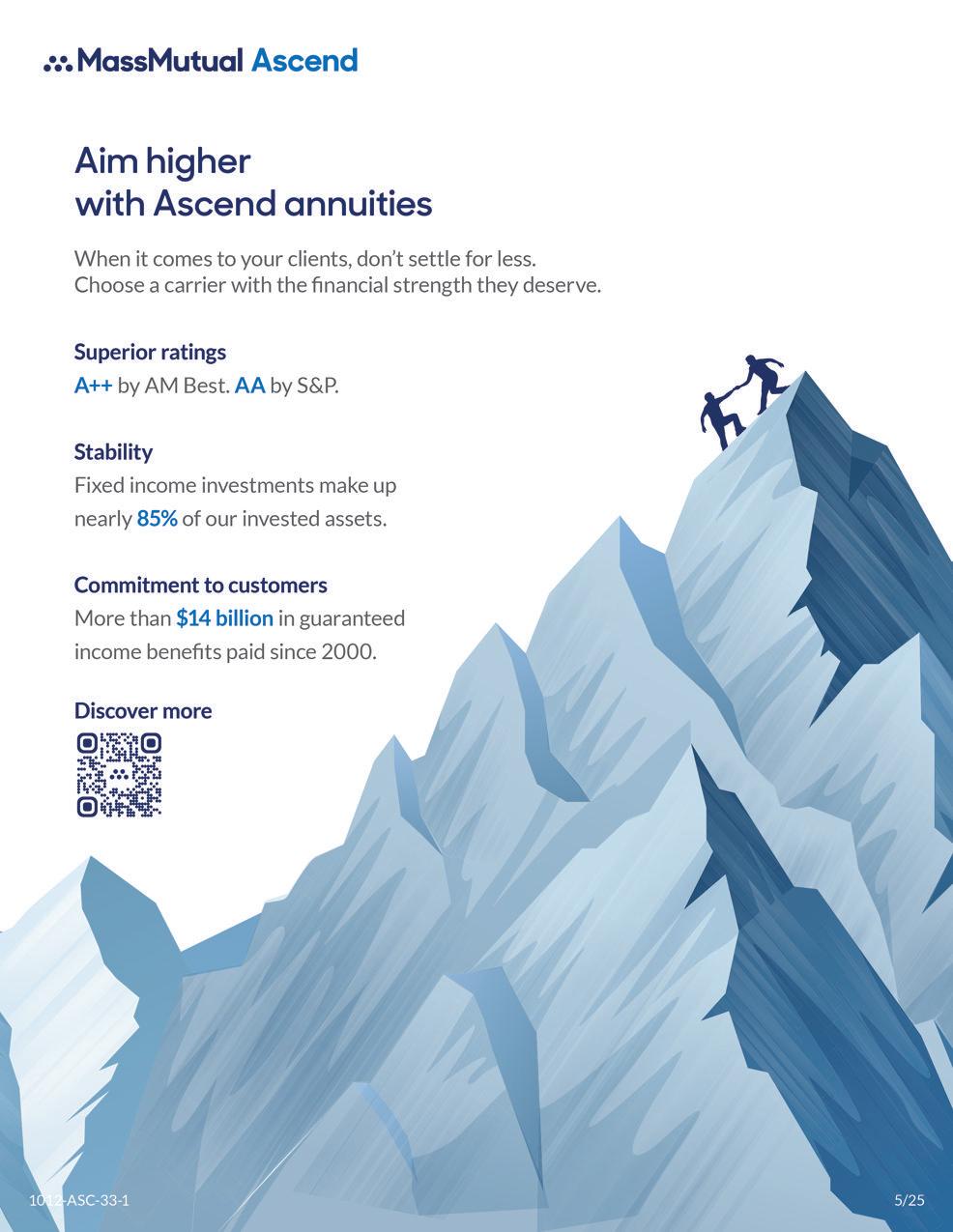
VICE VERSA)








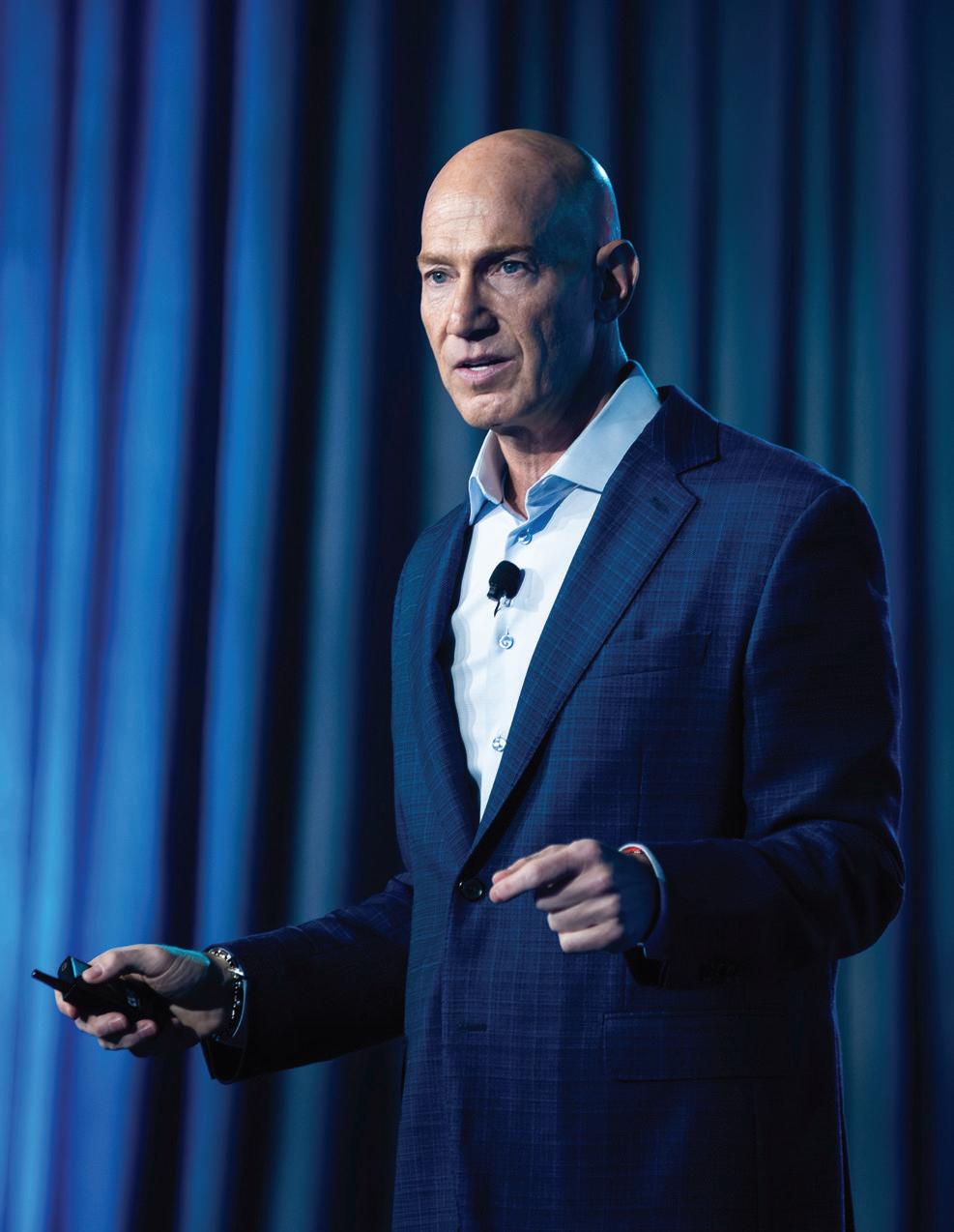







































BY ANDREW FARRELL, MSJ SVP, RETIREMENT SALES, DISTRIBUTION AND MARKETING
The unknowns of retirement can be daunting for your clients when they aren’t sure what to expect. Will there be inflation? How much will food or electricity or heat cost? And what about health care expenses?
Your insight and guidance can be the difference between apprehension and confidence for clients as they identify their retirement goals against a backdrop of uncertainty. There’s no one “right” way to achieve their goals for retirement, and grounding the conversation in the basics can give them the framework to better understand their options and make decisions that match their needs.
The traditional bedrock of a retirement plan is guaranteed, predictable income for the expenses of everyday life. The belief still persists for some clients that Social Security benefits, savings accounts or traditional pensions are their main (or only) options to cover this need. But sources of guaranteed retirement income have evolved and are more diverse than they might realize, and can range from straightforward (like certificates of deposit) to more complex and flexible (like annuities).
The flexibility and new features found in modern annuities can offer a compelling option to clients who want to ensure they have their basics covered first. Because those basics can be affected by inflation over time, guaranteed income solutions that can offer the potential for some growth in addition to their income guarantee could be attractive to consider in a portfolio.

Your clients may not be fully aware that in addition to guaranteed income, certain types of annuities can also offer ways to help offset inflation and maintain purchasing power. Among these are fixed indexed annuities (FIAs), which could play a key role in helping to preserve wealth, guarantee income for life and offer the potential for growth.
Because FIAs are linked to market indexes, they can typically provide greater growth opportunities based on market conditions than other income solutions may offer. By providing an additional guaranteed pool of money to supplement other sources of income, FIAs can help your clients’ portfolios withstand various market conditions, potentially offsetting inflation and maintaining purchasing power.
A retirement plan grounded in guaranteed income can help your clients prepare for the unexpected, cover the basics and have more freedom to enjoy their lives in retirement. Provide them with the education and tools they need to make informed decisions as they consider the mix of investments in their portfolios—even the less-obvious solutions.
Encourage them to challenge their preconceptions about what a successful retirement looks like for them and how they “should” get there as you introduce the solutions that can help secure their financial future.
Symetra has a range of annuity solutions, such as FIAs, that are designed to provide guarantees, protection and flexibility in any market. Connect with us to learn more about how we can help you support your clients’ goals.
Scan to help clear up annuity myths— and show clients the value at every life stage.
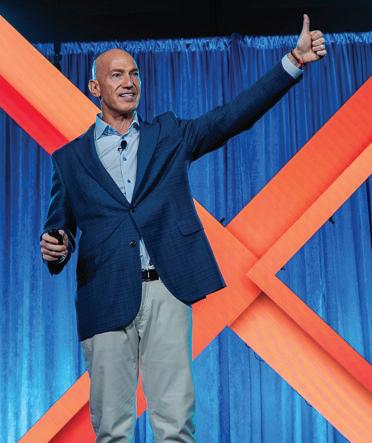






































BY ANDY BURT
Attending two of the wealth management industry’s biggest gatherings in back-to-back weeks –Future Proof Festival and Osaic ConnectED – I had a rare window into both the evolution of nancial advice and the people driving it forward. Across two very different formats – a high-energy corporate conference in Texas and a beachside festival in California – I had the chance to sit down with some of the industry’s most thoughtful leaders. Each conversation reminded me that beneath the data, technology, and consolidation, this business remains deeply human.
The Future Proof Festival in Huntington Beach set the tone. Instead of hotel ballrooms, panels unfolded on an open boardwalk beside the Paci c Ocean. Founder Matt Middleton told me his goal was to reinvent what a nancial conference could be.
“We’re all introverted in some way,” he said. But this location, with the right technology, and removing all the friction “allows [advisors] to actually engage on site.” Even after losing millions on his rst event in 2022, Middleton stayed committed to building a model rooted in genuine relationships, not transactions. “You never bet against humans,” he said. That theme of human connection came to life in my conversations with
Julie Penwell of Wealthspire and So a Massie, founder of LionShares. Penwell, one of InvestmentNews’ Next Gen Advisors of the Year, spoke passionately about using social media and webinars to expand access to nancial literacy. “The content is innovative,” she told me, “but what brings me back to Future Proof is the people.” Massie, a former quant trader turned ETF founder,
“Technology may transform the tools, but people will always be the heart of wealth management”
described launching her rst fund to minimize dividend taxes – an unconventional idea she pursued despite early doubts. “Eventually I said, I’ve got to make this a reality,” she told me. Both women represented the next generation Middleton was talking about: creative, fearless, and determined to make nancial advice more accessible.
A week later, the focus shifted inland to Osaic ConnectED, where
the conversation turned from connection to transformation. CEO Jamie Price opened the conference with a challenge to advisors to embrace the pace of change. “This is an amazing business to be in,” he told me. “You’re helping people do things that without you they could never accomplish.” He spoke about the “Fourth Industrial Revolution,” where arti cial intelligence, digital platforms, and cloud computing are reshaping how advisors work – ultimately freeing them to focus more on clients.
That drive for reinvention was echoed by Greg Cornick, Osaic’s EVP of Wealth Management Solutions. Having helped unify Osaic’s multiple broker-dealers into one platform, he compared the process to athletic training: “You did the blood, sweat and tears, and now you get to see how well you’re going to race.” Cornick’s energy mirrored the optimism I felt throughout both conferences.
I couldn’t help but see the same message shining through both events – whether on a windswept boardwalk or in a packed ballroom: technology may transform the tools, but people will always be the heart of wealth management.
EDITORIAL
VP
SALES
CIO: Terry Szames
CEO: Mike Shipley
COO: George Walmsley
KM Business Information US, Inc. 3190 S Vaughn Way, Suite 550 Aurora, CO 80014
InvestmentNews is part of an international family of B2B publications, websites, and events for the nance and insurance industries
INSURANCE BUSINESS AMERICA cathy.masek@keymedia.com
INSURANCE BUSINESS AUSTRALIA sophie.knight@keymedia.com
INSURANCE BUSINESS CANADA elijah.hoffman@keymedia.com
INSURANCE BUSINESS UK gemma.powell@keymedia.com
BENEFITS & PENSIONS MONITOR
WEALTH PROFESSIONAL CANADA abhiram.prabhu@keymedia.com




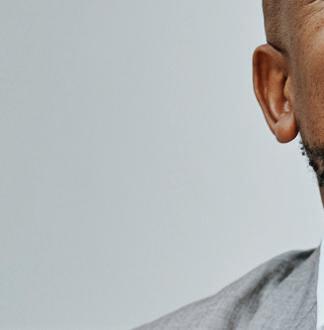
You deserve a provider with the financial know-how, superior service, and streamlined experiences that strives to reduce the confusion that complicates retirement planning. With Jackson®, you get expertise you can depend on, and a partner who will help you do right by your clients. That’s clarity for a confident future.



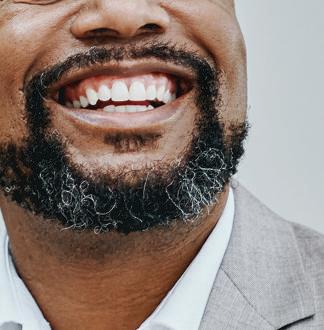



Home-of ce adoption, operational support, and poor incentives are just some of the many hurdles for advisors, according to Cerulli.
Challenges for ETF shareclass adoption
Reg BI concerns for wealth managers
Operational support of exchange mechanisms
Poor economic incentives for wealth managers
Compliance and regulatory challenges at the asset manager level
Lack of gating mechanism on ETF share class
Feature variation between mutual fund and ETF structures, leading to client experience dif culties
Risk of sub-scale ETF diverging from NAV
Asset manager concerns about offering product transparency
Advisor education challenges
Registered index-linked annuities have been smashing their historical records, achieving $19.1 billion in sales for the second quarter of 2025. According to LIMRA, RILAs as a category have grown more appealing in the current economic environment due to their promises of protected growth with attractive caps and participation rates.

Discounting a brief stumble in 2022, mega-RIA sellers – those with more than $5 billion in assets – have consistently accounted for 10–12% of M&A transactions since 2018, according to data from DeVoe & Co.


In its most recent survey of independent advisors, Schwab Advisor Services found roughly two- fths expect to see the impact of AI solutions play out in research and analysis over the next three years, while one-third anticipate a difference in operational work ows.












Sales of alternative investments have exploded in recent years, leaving some observers wondering whether financial advisors truly understand the products and whether clients realize the risk
BY BRUCE KELLY
With sales of interval funds hitting new highs during a boom time for alternative investments, two powerhouse firms, Capital Group and KKR, have teamed up to create funds that add a new wrinkle to an old product. They are boosting the amount that clients can sell their shares back to the company of the illiquid product from 5 percent per quarter, the industry standard, to 10 percent.
Two recently launched funds, Capital Group KKR Core Plus+ and Capital Group KKR MultiSector+, both have the extra added liquidity, according to their company websites. Both are outof-the-box brand new; the former, which invests in public fixed income and private credit, had just $205.4 million in assets near the end of August. The latter, which invests across public and private credit markets, has $280.4 million in assets.
The Capital Group KKR Core Plus+ fund had an NAV of $10.24 per share on September 29, and the Capital Group KKR Multi Sector+ fund’s NAV was $10.30.
Financial advisors sell alternative investments like interval funds, along with non-traded business development companies and real estate investment trusts, to clients who are hungry for yield and open to diversifying their portfolios away from stocks and bonds. Shares are usually priced around $10 when the funds launch.
Interval funds have limited liquidity and – until now – typically bought back up to 5 percent of clients’ shares per quarter. It’s too early to tell if the new 10 percent buyback will become an industry standard; if a fund adds liquidity by investing in cash or easy to sell Treasury Bonds, it could put a damper on returns.
“The two Capital Group and KKR funds mix public credit and private credit, with about a 60 to 40 percent split,” said Bryan Armour, director of ETFs and passive strategies research for Morningstar, during a recent episode of the InvestmentNews Podcast
“With 60 percent in the public markets, that gives the fund a more liquid profile to begin with, and it will be able to pay out 10 percent pretty easily,” Armour said. “That does seem like an easy

“With 60 percent in the public markets, that gives the fund a more liquid profile to begin with”
BRYAN ARMOUR, MORNINGSTAR
bridge for retail investors moving into private markets for the first time, right?”
Non-accredited investors – or those with less than $1 million to invest – can buy the new funds, and they have minimums of $1,000.
“Private market investments can enhance returns and add diversification within a portfolio yet have historically been out of reach for everyday investors given accreditation requirements and higher investment minimums,” said Holly Framsted, head of product group, Capital Group, in an email.
The private credit market has exploded in the past 15 years, as banks had restrictions on lending
after the 2008 credit crisis. Some see plenty of dangers in a potential private credit market meltdown, particularly if interest rates spike. Others believe private credit is simply a new sector to invest in, much like junk or high-yield bonds were in the 1980s, although the meltdown in junk bonds ended the go-go times of that decade.
“Advisors are plowing client money into interval credit funds and BDCs, but if interest rates go up, all those businesses that took on the debt will face higher payments,” said one senior industry executive, who spoke privately about the matter to InvestmentNews. “How many of those companies will be able to cover those interest payments, and what will the likelihood of default be?”
Sales of alternative investments have exploded over the past few years, leaving some observers wondering whether financial advisors truly understand the products they are selling and if clients realize the risk they are buying.
According to investment bank Robert A. Stanger & Co. Inc., fundraising – meaning sales – of alternative Investments will reach $200 billion by the end of the year, compared to close to $138 billion in sales of alternative investments last year and $84 billion in 2023.
Interval funds are no exception to the alternative investment fiesta that advisors and money managers are now celebrating; advisors sold $8.6 billion of the product in 2020, and sales have more than tripled in half a decade, reaching $30.1 billion last year, according to Stanger.
Per fund tracker Morningstar, alternative funds are more expensive than US stock mutual funds, including open-ended funds and ETFs, although fees on alternative funds have been coming down

Two recently launched funds, Capital Group KKR Core Plus+ and Capital Group KKR Multi-Sector+, both have extra added liquidity NEW INTERVAL FUNDS INCREASE QUARTERLY BUYBACKS Plus+

“Financial advisors may be cautious. They may be careful and see how the funds perform though a couple of cycles”
JOHN COX, COX CAPITAL PARTNERS
since 2019, according to Morningstar research published last year.
As measured by an asset-weighted average, alternative funds on average currently charge a fee of 1.03 percent, while US equity funds charge 0.6 percent.
One industry executive said the new 10 percent per quarter in the revamped interval funds would
most likely cause advisors to take a wait-and-see approach to the product.
“Financial advisors may be cautious,” said John Cox, CEO of Cox Capital Partners, which invests in non-traded alternatives in the secondary market via a proprietary fund. “They may be careful and see how the funds perform though a couple of cycles.”

Annuity sales are at record highs, nearly doubling since 2020. Private equity, shifting advisor fee models, and an evolving regulatory landscape are reshaping how insurers and distributors keep pace
BY ANDREW COHEN
The annuities marketplace is banking on continued investment from private equity to keep up with product demand, as US annuity sales increased 8 percent year over year to a record $119.2 billion in the second quarter, according to LIMRA.
LIMRA’s data also shows total US annuity sales nearly doubled from $219 billion in 2020 to $434 billion in 2024, and reached a record $223 billion in the first half of 2025. The trade association hosted a webinar in September titled, “What Will It Take to Double Annuity Sales Over the Next 5 Years?” hosted by LIMRA’s SVP and head of research, Bryan Hodgens.
“Over the last several years, there’s been a lot of capital in the market,” Hodgens tells InvestmentNews
“A lot of private equity money that’s come into the insurance industry − the use of reinsurance to be able to offload some of the liabilities of these products and free up more capital for deployment for the insurer − that’s got to continue, that availability of capital in order for us to continue to grow.”
Some main financial backers of the annuities industry share growing ownership ties with American’s biggest sports franchises. For example, Guggenheim Partners CEO Mark Walter, who purchased the NBA’s Los Angeles Lakers for a league-record $10 billion, also owns annuity prod-

ANNUITIES BY THE NUMBERS
$119.2B US annuity sales in Q2 2025 (LIMRA)
$434B
Total annuity sales in 2024, nearly double 2020
$65.6B
RILA sales in 2024, surpassing variable annuities

ing organizations − broker general agencies where they’re investing in platforms that are known to distribute both annuities and life insurance,” says Hodgens. “Whether it’s on the annuity side or the life insurance side, it’s just this opportunity for the investment into the products because the need is there.”
Walter is part of the ownership group behind the MLB’s Los Angeles Dodgers, which includes former Guggenheim Partners president Todd Boehly, who also owns the WNBA’s Los Angeles Sparks and
“Over the last several years, there’s been a lot of capital in the market, a lot of private equity money that’s come into the insurance industry”
BRYAN HODGENS, LIMRA
uct providers Delaware Life and Gainbridge via his Group 1001 insurance holding company.
“It’s not just in the products. I’d also say it’s in distribution as well because you’re seeing private equity show up in some of the independent market-
the English Premier League soccer club Chelsea FC. Boehly’s private investment firm, Eldridge Industries, is an investor in commission-free annuities marketplace DPL Financial Partners. DPL’s founder and CEO, David Lau, tells InvestmentNews

Group 1001 (Mark Walter): owns Delaware Life and Gainbridge annuity companies
Eldridge Industries (Todd Boehly): investor in DPL Financial Partners
The sports power duo of Walter and Boehly owns stakes in the Los Angeles Lakers, Los Angeles Dodgers, Los Angeles Sparks, and Chelsea FC
that his firm’s annuity sales more than tripled over the past two years, surpassing $5 billion.
“I think they see that we can play a very important role in the future of annuity usage,” Lau says of DPL’s private equity backers. “I think they see that we represent the future of the annuity distribution world. We’re working with fiduciary advisors, with fiduciary products that are based on fees rather than commissions. And anybody really can see that’s the direction of the world.”
DPL’s most recent fundraise was a $23 million Series C round led by Eos Ventures with participation from TIAA Ventures. Boehly’s Eldridge invested in a $26 million growth capital raise announced in 2021 by DPL. Former Barclay’s CEO Bob Diamond’s Atlas Merchant Capital is also an investor in DPL Financial Partners.
“Annuities are still largely commission-driven, and the number of advisors willing to accept the commission these days continues to contract,” Lau says. “Advisors will move their business practice to working on fees from customers rather than sales commissions from product companies. The annuity industry really needs to embrace that model and create more products and systems that support those kind of advisors, or else they’ll continue to work in a contracting addressable market.”
Tate McMillin, regional sales manager at Pacific Life Retirement Solutions, says that the fee compression confronting advisors is playing a role in their annuity product interests.
“There’s been a bit of a pendulum swing away from fee-based annuity strategies like variable annuities and toward spread-based products like fixed-index annuities and RILAs,” says McMillin.“And in those latter two strategies, there is not an explicit fee presentation to the client, which many advisors and clients find attractive.”
Sales of registered index-linked annuities (RILAs) reached $65.6 billion in 2024, 38 percent higher than in 2023. LIMRA says 2024 marked the first year ever that RILA sales surpassed traditional variable annuity sales, which was $60.9 billion in 2024.
“We’re definitely seeing the rise of popularity of RILAs, and I think that is indicative of a few things,” says McMillin. “I think it’s representative of a growing shift toward asset protection, fee compression, need for account value growth, and all that combined with an aging population.”
The high-interest-rate environment of the past few years, and America’s growing population nearing retirement age, also have been catalysts for the boom in annuity sales. Research released in July from the Alliance for Lifetime Income by LIMRA found that


“Advisors will move their business practice to working on fees from customers rather than sales commissions from product companies”
DAVID LAU, DPL FINANCIAL PARTNERS
58 percent of consumers ages 45 to 75 are concerned that their Social Security benefits will be reduced based on recent actions taken by the federal government and 30 percent of consumers ages 61 to 65 say they are now considering delaying retirement.
“This whole question of how much guaranteed income will I have from Social Security, at what age can I get my full benefit, and is it going to get adjusted? I think that plays into the psyche of some of this retirement planning,” says Hodgens. “I think advisors working with consumers bring up annuities as a guaranteed income source to complement Social Security and other guaranteed income they may have, maybe from a pension.”
The Trump Administration has considered regulatory changes overseeing annuities during this time of booming sales. In August, the US Department of Labor withdrew a direct final rule that would have eliminated a regulatory safe harbor in place since 2006 for selecting annuity providers in workplace retirement plans. The DOL’s withdrawal decision followed significant opposition from the Insured Retirement Institute and other industry stakeholders.
“Policymakers are trying to expand retirement plan coverage and promote lifetime income options, which annuities are part of, and we saw that removing the safe harbor would move in the opposite direction by creating more uncertainty and reducing access to innovative products like annuities,” Emily Micale, director of federal regulatory affairs at the Insured Retirement Institute, tells InvestmentNews Lau, whose annuity and insurance marketplace DPL Financial Partners is used by 1,500 RIA firms and 13,000 advisors spanning about $2 trillion in collective assets, thinks consumers would benefit from additional regulation of annuities.
“I think the current regular landscape is actually very favorable to annuities, maybe a little too favorable as there isn’t a fiduciary standard relative to annuities. They still operate only under a suitability standard, regulatory wise,” Lau says. “So that gives advisors and compliance departments a fair amount of leeway in being able to sell an annuity to an individual. We’ve been big supporters of a fiduciary rule because we think it would be good overall for the industry in the long term, and certainly much better for consumers.”
Aspirations
Lock in a 7% compounding roll-up rate for your clients with Protective Aspirations® variable annuity’s optional SecurePay Protector SM lifetime income benefit. It offers guaranteed growth to the benefit base and 6% guaranteed income for life at age 65. Scan here to help your clients be ready for life’s twists and turns.

With an increasingly saturated US market, some mega-RIAs are looking abroad for clients and acquisitions, testing if the independent advice model can thrive internationally
BY ANDREW COHEN
After years of growth through M&A consolidation at home, US-based megaRIAs are setting their sights on the next frontier. With the US market increasingly mature, firms are looking abroad for untapped client opportunities and testing whether the independent advice model can thrive beyond American borders.
San Francisco-based RIA consultant DeVoe & Company noted in a recent data release that this year’s third quarter was the most active quarter in RIA dealmaking history, at 94 transactions.
As private equity capital fuels soaring valuations stateside, firms bargain-hunting overseas could scoop up RIAs for throwback prices, M&A advisor Jessica Polito tells InvestmentNews.
“I think the M&A market stateside is so saturated that other, especially English-speaking, countries abroad are an untapped opportunity,”
says Polito, founder of M&A advisory Turkey Hill Management. “They haven’t been the recipients of outreach for the last 10 years the way US-based RIAs have, and because there’s been less deal activity, multiples are probably lower. There’s probably opportunity to snap up big or small rms for prices that we were seeing maybe ve, 10 years ago that you just can’t do here anymore.”
Emily Blue, co-founder of the sell-side M&A advisory rm Hue Partners, says that the industry will “continue to see more global M&A activity in the coming years.” Interest in managing overseas wealth comes as an estimated 1,285 US citizens moved abroad in the rst quarter of 2025, marking a 102 percent increase compared with the last quarter of 2024, according to consulting rm CS Global Partners.
“RIAs in the United States are signi cantly more advanced than their counterparts globally, and many are now exploring international opportunities as a natural extension of their business,” Blue tells InvestmentNews. “The RIA market has always strived to meet clients

“There’s probably opportunity to snap up big or small rms for prices we were seeing maybe ve, 10 years ago, that you just can’t do here [in the US] anymore”
JESSICA POLITO, TURKEY HILL MANAGEMENT
wherever they are, and as more clients consider life abroad, it’s increasingly important for RIAs to be positioned globally.”
Large RIAs headquartered in the United States undergoing targeted expansion abroad include
Corient, AlTi Tiedemann Global, and Focus Financial Partners. AlTi Tiedemann Global trades publicly on NASDAQ, where Focus Financial Partners also traded until its 2023 take-private acquisition by af liates of Clayton Dubilier & Rice. Corient and its parent rm, CI Financial, were taken private last year via acquisition by Abu Dhabi sovereign wealth fund Mubadala.
Corient owns over 260 RIAs, with more than 1,300 total employees managing approximately $216 billion in client assets. The Miamiheadquartered rm ignited its global expansion last month via acquisitions of UK-based wealth managers Stonehage Fleming and Stanhope Capital Group, bringing more than $214 billion collective assets to Corient and access to clients across Europe, the Middle East, and Africa.
“Because of the fragmented nature of the US, we were able to build a business and create scale through a series of smaller, microacquisitions. Europe is a very different dynamic where it was the opposite strategy – we ended up buying literally number one and number two



down markets. With attractive rates and a dynamic set of features, Amplify may be a sound choice for today’s long-term investor.











For financial professional use only. Not to be used with the offer or sale of annuities.






Athene Amplify 2.0 is designed to be a long-term investment product used to help provide income for retirement. It is not suitable as a short-term investment. There is a risk of sub stantial loss of principal and related earnings depending on the Segment Option(s) to which your client allocates their Purchase Payment. In the event of negative index performance, Segment Credits may be negative after application of the Buffer Rate and your client agrees to bear the portion of loss that exceeds that rate.

This material is provided by Athene Annuity and Life Company (61689) headquartered in West Des Moines, Iowa, which issues annuities in 49 states (excluding NY) and in D.C. Product features and availability may vary by state and/or sales distributor.
AND




in the market at the same time,” says Corient CEO Kurt MacAlpine. “It’s a very top-heavy market, so you want to make sure that you’re buying and accumulating scale with the best talent.”
Another factor in Corient’s strategy for European wealth managers is the expansive variance of time zones, regulators, currencies, and languages. “I have one compensation model that everybody is effectively in domestically, and we’re going to be extending that to Europe,” MacAlpine adds, as part of Corient’s unified approach for its global operations.
Focus Financial, whose network firms manage over $450 billion in client assets, has centered its international expansion efforts on growing in both Canada and Australia.
AlTi Tiedemann maintains almost an even split of 10 offices in the US compared to nine internationally

“We really believe that being global will be key to having success servicing the ultra-high-net-worth demographic”
KEVIN
MORAN, ALTI TIEDEMANN GLOBAL
across the UK, Lisbon, Paris, Switzerland, Milan, and Hamburg, Germany, as well as Singapore and Hong Kong. The firm’s international expansion began in 2019 with a move into Zurich, while it most recently acquired the $15 billion German multi-family office Kontora in March. AlTi totals $31 billion in assets under management outside the US, the firm’s president and chief operating officer Kevin Moran tells InvestmentNews
“We really think that the path of the wealth management industry will increasingly become a global one,” says Moran. “We really believe that being global will be key to having success servicing the ultra-high-net-worth demographic. We believe the families that are ultra-high-net-worth will increasingly themselves become global – they want to invest globally, they will have family members living in and outside of the United States, or international families will have family members living in more than one country over time.”
Moran notes that AlTi’s presence in Switzerland, given the nation’s favorable regulations, enables
AlTi to serve cross-border clients across the Middle East, Asia, and Europe. “We don’t necessarily need to have offices in every single part of the world,” he says. “The Middle East is a dynamic growing market, and an ultra-high-net-worth business is an obvious place that we should be paying attention to and looking to be relevant in, so we will certainly look to do that.”
Expanding overseas requires expertise in that country’s local investment scene, regulations, and tax law, while advisory firms in the US also have to invest heavily in technology and operational resources to maintain a global workforce. But not all mega-RIAs stateside are yet sold on the appeal of international markets.
“Hightower has no plans to expand internationally at this time,” says a spokesperson for the Chicago-based Hightower RIA that manages over $308 billion in client assets with over 140 advisory practices across 36 states. “Our priority is empowering our advisors to deliver an unmatched client experience while continuing to add growth-minded practices across the US.”














































TECH IS a game changer for wealth managers, giving them the one thing they can’t create – time.
No matter what role a technology solution is designed for, its primary bene t is completing a task faster. This, in turn, cascades into delivering outcomes more ef ciently and in greater detail.
Orion’s 2025 Advisor Wealthtech data shows time constraints present the largest hurdle to growth, emphasizing the need for time-saving tech. The best in the business have pushed themselves apart from the competition and after lengthy research, 26 standout rms were awarded 5-Star Technology status by InvestmentNews for their ability to develop leading-edge products and platforms.
Ray Ortiz, managing principal at global tech consultant Capco, highlights that from a capability perspective, leading solutions should deliver intelligent, intuitive tools that include advanced analytics for anticipating client needs and centralized data for seamless, real-time access, with the ability for mobile access.
“They should support goals-based investing and scenario planning aligned to client risk tolerance, tax ef ciency, and preferences,” he says. “There




“Our goal ultimately is to really help advisors so they’re spending as much of their time as possible with clients, and remove all the administrative tasks”
MARK GILBERT, ZOCKS
should be customizable reporting dashboards with clear performance metrics and a rules-based engine for regulatory compliance and risk management. It should enable work ow automation and integration across CRM, compliance, planning, and trading to drive operational ef ciency.”
Andrew Rose, associate analyst of wealth management at nancial researcher Cerulli Associates, selected what he believes to be the key components of a leading tech platform.
• Streamlined research and analysis: solutions that guide an ef cient research process, enabling advisors to analyze securities and identify investment opportunities that align with client objectives.
• Effective comparing and filtering tool: makes it easier for advisors to choose options that match client goals.
• Comprehensive tool (more than one solution): for conducting investment research, trading/rebalancing, and even solutions for alternatives and other specialized investment strategies.
• Integration with adjacent tools such as CRM: advisor ef ciency is key, but part of the ef ciency is seamless integration.
Rose adds, “A well-integrated system reduces errors, streamlines work ows, and creates a more positive experience for both advisors and clients.”
According to the 2025 Connected Wealth Advisors and Technology report, 65 percent of advisors would like to upgrade their technology stack, and only 35 percent say their platform is state-of-the-art. This demonstrates a noticeable gap between rms’ demands and the services provided –a gap that the best wealth tech rms are addressing.
Zocks is an AI-powered client intelligence platform purpose-built to transform how advisors and firms capture, organize, and leverage client information without recordings.
Typically, advisors spend anywhere from 10 minutes to an hour prepping for a meeting, but
the platform means they can scan that in a couple of minutes.
The company states advisors save around 45 minutes per client meeting through Zocks’ Client Intelligent Platform, which uses AI to determine the most important topics to cover based upon previous meetings, emails, and CRM systems including Redtail, Wealthbox, Practi , Salesforce, Microsoft Dynamics, and HubSpot.
Zocks CEO Mark Gilbert says, “For people who are dealing with extremely high-net-worth clients, it will often today take one-and-a-half to two hours post-meeting to get all the details in. We can get it down to about 10 minutes.”
The platform can automate notetaking, followups, and CRM updates across virtual, phone, and in-person meetings, helping advisors to be fully present during client conversations while ensuring no important details are missed.
“If they have ve to 10 meetings a week with clients, which is pretty common, that adds up really quickly and it’s giving them real time back,” says Gilbert.
Privacy is also assured as Zocks creates structured, actionable data without recording conversations. This aligns with SOC 2 Type 2 certi cation and HIPAA compliance. Its genius is that it listens to the audio and determines who the speakers are, similar to closed captions on TV.
Gilbert explains, “It is building up a big database, essentially the same as database tables for nancial information, personal information, metadata, as the meeting is going on, so that allows us to get the structured data.”
That also enables the platform to guide the advisors during the meeting if they want to cover certain topics that they haven’t mentioned. Zocks can also aid signi cantly with post-meeting administrative work, delivering essential details from a meeting to determine an advisor’s next steps with a client.
Chief strategy of cer Dani Fava of Carson Group, which uses the product, reported a 97 percent weekly active usage rate among their advisors, while portfolio manager AJ Norris of Norris Financial Group believes it outperforms other tools such as FinMate AI and Jump.


He says, “After our 14-day trial with Zocks, I can con dently say it saves me at least twice as much time. The pricing is in line or less than competitors, but the features are far beyond.”
Zocks can be set to predetermine what data is processed, signi cantly easing fears over data sharing with third parties.
Gilbert explains, “We have very advanced data protection policies. Let’s say there’s social security numbers they don’t want in the system or they don’t even want to be processed. We can redact anything early on.”
He emphasizes how rival notetakers tend to use third parties to record, connect with Zoom or Teams, which creates another type of risk.
“We don’t need to send data out to all of these other third-party services to process it and that’s been very impactful, especially for larger rms.”
Wealth.com is another firm that has received 5-Star Technology 2025 status for its Family Office Suite, designed to help advisors serve high-net-worth (HNW) and ultra-high-net-worth (UHNW) clients. According to estimates, what used to be more than 50 hours of advisor work can be slashed to a matter of minutes while unlocking scale and enhancing precision.
Family Of ce Suite combines advanced automation, intuitive visualizations, legal rigor, and deep integration capabilities designed with multigenerational estate planning.
Advisors go beyond static spreadsheets and PDFs with dynamic modules such as Heritage Map, Legacy Navigator, EstateFlow, and Irrevocable Trust One-Pagers, which bring to life highly nuanced estate structures – including sub-trusts, generationskipping transfers, and distribution strategies – in an interactive and easy-to-understand format.
Dan Bolton, head of marketing, explains, “There’s just so much complexity when you serve the UHNW. We offer that high-touch collaboration
across legal, tax, and investment teams. The goal is to give families a private, secure hub to manage that entire estate ecosystem.”
Part of Family Of ce Suite’s bene ts is it provides access to attorneys in all 50 states, while advisors can leverage scenario builders and estate tax calculators to identify tax alpha opportunities, quantify exposure, and model optimal strategies for preserving wealth across generations.
Bolton adds, “We’re able to service from the most basic to the most complex of client needs.”
All of Wealth.com’s technology is proprietary, including its AI tool, Esther, which is akin to a digital co-pilot that reads and parses information for advisor and client.
“We have an AI team dedicated to building out our capabilities, and doubling down on those has been a major differentiator,” says Bolton. “Also, from a compliance and security standpoint, it’s leagues different.”
The Family Of ce Suite also enhances rm branding and communication through its dynamic Report Builder. In seconds, advisors generate personalized, white-labeled presentations that combine all estate insights into a single, elegant report. This elevates the client experience and positions advisors as thought leaders.
Connectivity is where MCO (MyComplianceOffice) stands out. The multi-tenant SaaS platform allows compliance teams to proactively manage the regulated activities of the company, employees, and third-party vendors and provide proof of regulatory compliance via one system.
Split across four product suites, MCO ensures that rms have a clear view of potential risk and can remedy con ict before it becomes a problem:
• Know Your Employee provides compliance with an easy and affordable way to monitor,











For the InvestmentNews 5-Star Technology awards, technology service providers from across the United States were invited to submit nominations showcasing how their solutions address speci c challenges faced by wealth management professionals. Submissions also needed to highlight how each product or service differentiates itself from others in the marketplace.
The InvestmentNews team conducted a rigorous and impartial evaluation of each entry. This assessment focused on the quality and depth of information provided, the level of genuine innovation, and the overall value the solution brings to the industry. Submissions were benchmarked against one another to determine the top performers.
Additionally, the team recognized standout innovations in the New Technology category. To qualify, entries had to be technologies or software solutions launched within the past 24 months, speci cally designed for nancial advisors and the broader nancial management sector.



“You can have great technology, but you have to have the subject matter expertise informing that technology”

DAN BOLTON, WEALTH.COM
manage, and ensure adherence to policies, mitigating the risk of misconduct.
• Know Your Transactions helps rms mitigate risk that can originate from trading activities including market manipulation, insider trading, and suitability.
• Know Your Third Party delivers due diligence of third-party risk from vendors, customers, counterparties, agents, and partners.
• Know Your Obligations enables rms to manage regulatory change and structure policies, procedures, and controls to drive understanding of compliance requirements across the organization and assure compliance.
Being so adaptable is why the product’s clients range from small rms to companies with up to 100,000 seats.

Chief revenue of cer Dave Kubersky says, “Lots of companies talk about something being integrated, but more often than not, it’s just a veneer and you still have the underlying challenges. The fact that we’ve got a uni ed compliance platform allows us to add capabilities very quickly and because the data is in a single place, there is an ability to cross surveil between different capabilities.”
MCO acquired the rm Pythagoras and has integrated that into the platform, ahead of the Treasury Department’s Financial Crimes Enforcement Network (FinCEN) implementation of
Source:
its AML (Anti-Money Laundering/Countering the Financing of Terrorism) program in January 2028.
“It cements our ability to provide that capability and it’s actually a company that’s headquartered in Switzerland, so it gave us a strong base in Europe and brings us into the private banking space more rmly,” says Kubersky.
Ease of use is important as MCO focuses on being intuitive with the number of keystrokes limited. Another key bene t is its alert-based technology to ag issues.
“Not all demand a high degree of scrutiny, but we’ve also been able to set up a number of


“The pace of technology and regulatory change is quick. Our commitment is to ensure that the platform stays evergreen”
DAVE KUBERSKY, MYCOMPLIANCEOFFICE
work ows where manual approvals happen automatically,” explains Kubersky. “This allows our customers to focus on the most important things, as opposed to having to wade through volumes of data to gure out where those anomalies might be.”
With the onslaught of AI, many rms focus on their priorities rst, and second on compliance and looking for a problem to solve, whereas MCO adopts the opposite viewpoint.
“We’re really looking at AI as an enablement tool and it’s ability to identify areas of ef ciency for our customers,” says Kubersky. “We’re selectively using it because the regulators are still wary of systems that are operating exclusively as a black box.”
Being custom-built enables Sycamore’s Compliance Manager to stand out from other regtech platforms. Every feature in the 5-Star Technology winners’ package, from trade review workflows to client correspondence supervision, is tailored to FINRA and SEC expectations.
While some compliance systems lack native integration or offer only limited point-in-time reporting, Compliance Manager has dynamic, role-based dashboards with real-time feeds from CRMs, email archives, trade systems, and communication platforms.
“The number one pain point in the industry is data quality,” says president and founder Mike Overdorf. “We aggregate and normalize it, which is very important, because everyone sends data a little bit differently and then puts it into a single database.”
Advisors have to go through millions of records – an impossible task to complete manually. However, Compliance Manager users report up to a 70 percent reduction in time spent on routine surveillance tasks, along with enhanced audit readiness and improved advisor satisfaction.
Compliance Manager integrates seamlessly with other modules in Sycamore’s cloud-native ecosystem, such as onboarding, compensation, billing, and trade blotters. This enables a single source of truth across operational and compliance domains, eliminating


Source: Advisor360°’s 2025 ConnectedWealth Report
the fragmented data silos that have long plagued wealth management rms. The result is faster issue resolution and better transparency.
In addition, Sycamore is native to Salesforce, and its development is driven by those with client-facing experience, ensuring all features are appropriate for the real demands advisors face.
Overdorf says, “I tell my team 95 percent of the world’s problems are due to bad communication, so, if anything, we overcommunicate.”
And he also takes pride in the rm’s transparency. “Our clients can log into our case tracking org and see all communications that we have back and forth with developers and project managers.”
Disconnected solutions (24 percent) and costs (22 percent) are the biggest tech-related challenges, followed by lack of training and rapid tech changes, per Orion’s 2025 survey. At the same time, 14 percent of advisors mention insuf cient training as a barrier.
The more problems or anticipated issues a platform’s introduction poses, the less likely advisors are going to use it.
Ease of use is paramount, as Rose explains: “Advisors will not dedicate large amounts of time simply learning how to use a tool. We have talked to advisors who have changed vendors because the solution is too hard to use.”











Advisors also want assurance that their account tracking, client meeting management, and investment analysis are all tightly woven into a seamless system that can be swiftly incorporated into an advisor’s work ow. Tech rms that miss the mark on integration will inevitably lose out.
Rose says, “Integration is a major challenge for many advisors when adopting new technology, but overcoming this obstacle is crucial.”
Echoing that sentiment is Ortiz, who agrees that one of the largest hurdles to overcome is the often-excessive time needed to learn a new operating system.
“Many platforms present a steep learning curve, with complex and unfamiliar features that make it dif cult for advisors to nd time to adapt,” he notes. “Integration and data quality issues can lead to data silos, inef ciencies, and excessive manual effort to ful ll client requests.”
Ortiz also feels there’s a need to turn complex data into intuitive stories that support advisor decision-making and improve client understanding with interactive visuals.
He adds, “Platforms should also be optimized for mobile and accessibility, offering 24/7 access, personalized self-service, and consistent experiences across channels.”
Advisors are leveraging tech to reclaim time, so they can better serve their clients and use their financial skills where they have the most impact.
The crucial elements that enable tech platforms to offer this are:
• integration
• data quality
• intuitive interfaces
• updates and improvements
• provider support
Without these, tools and solutions are not market-ready for what the nation’s advisors demand and need to service their clients.


“We have a lot of developers and sys admins working really hard, but all the information passes through folks that have worked in the industry”
MIKE OVERDORF, SYCAMORE


MCO (MyComplianceOf ce)
Phone: 866 951 2280
Email: advance@mycomplianceof ce.com
Website: mco.mycomplianceof ce.com
The Sycamore Company
Phone: 716 698 7263




Email: mike.overdorf@sycamorecompany.com
Website: sycamorecompany.com
Wealth.com
Email: info@wealth.com
Website: wealth.com
Zocks
Phone: 425 533 4201
Email: info@zocks.io
Website: zocks.io
Absolute Engagement
Advisor360° Amplify


GReminders
MyVest
Opto Investments



ProTracker Software Inc.
RegEd
RegVerse - A SurgeOne.ai Company
Saifr
Savvy Wealth
Seismic
Snappy Kraken
Wealthtender
Zeplyn
INSIGHTS


Andrew Rose
Associate Analyst, Wealth Management Cerulli Associates
Ray Ortiz Managing Principal Capco











As part of our editorial process, Key Media’s researchers interviewed the subject matter experts below for an independent analysis of this report and its ndings.
Sanctuary Wealth CEO Adam Malamed explains his strategy to bring over more wirehouse advisors
BY GREGG GREENBERG
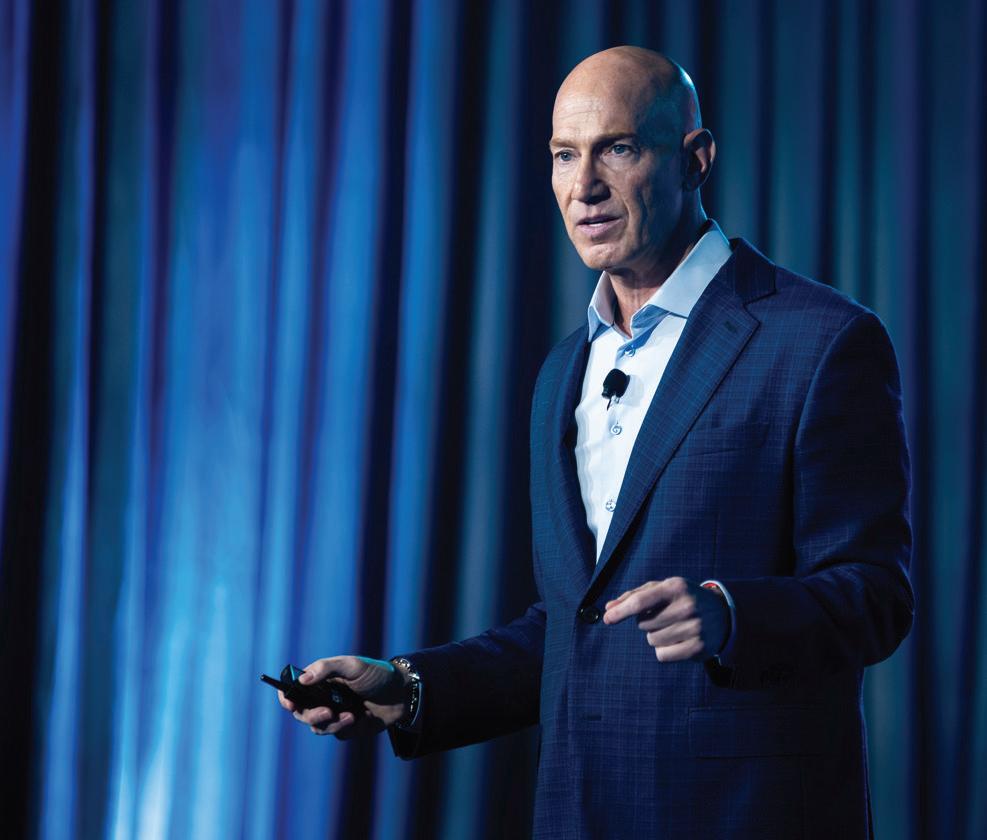
MORE WIREHOUSE advisors are seeking Sanctuary. Sanctuary Wealth that is. And CEO Adam Malamed would not have it any other way.
Over the past year and change, Malamed’s hybrid RIA has welcomed more than 16 new partner firms representing more than $10 billion in client assets. The Sanctuary Wealth network now includes over 125 partner firms in 32 states, with over $55 billion in assets on and in transition to their platform.
This past summer, Sanctuary bagged highly sought-after Dial Square Private Wealth, which came
over from UBS with $1.2 billion in client assets. Malamed attributes that victory – and others like it – to a leadership team that thoroughly understands the circumstances wirehouse breakaways are coming from and where they want to go.
“Sanctuary’s management encompasses multiple former wirehouse executives and operational experts who understand the wirehouse and independent channels. And having helped to transition and grow over 120 partner firms, most of them from wirehouses, our record speaks for itself,” Malamed says.
But Malamed stresses Sanctuary is not opening its doors to any old wirehouse team dreaming of a more independent future.
“Our partner firms are the best of the best and want to work with people who share their commitment to excellence. There is no secret to our success beyond holding ourselves to the highest possible standards –which is what our partner firms expect,” Malamed says.
INVESTING ALONGSIDE ITS ADVISORS
Malamed believes it takes more than talk to cement a mutually beneficial relationship. It takes investment as well.

“The only way an ecosystem can be successful is if you understand what advisors want and need and then give it to them”
The Sanctuary Wealth network includes more than 125 partner firms in 32 states nationwide
Over $55B in assets on – and in transition to – Sanctuary’s platform
Approximately 180 employees
Headquarters: Miami, FL, and Indianapolis, IN
Earlier this year, Sanctuary announced a minority investment in Alluvial Private Wealth, an Ohio-based existing partner firm. Alluvial was the first deal completed under Sanctuary’s Strategic Capital Partnership Program, which provides backing to help selected independent partners grow.
In addition to allowing Sanctuary to invest alongside its partner firms, the program also enables firms interested in inorganic growth to secure capital to explore expansion through
acquisition – regardless of where they are in their business life cycle.
“This program, like all our capital and operational programs, is designed to enable our partner firms to build their businesses as they see fit. By formalizing our approach, we’ve enhanced our clients’ experience, which is central to our vision of continuous improvement of our platform,” Malamed says.
“We stand right next to our partners, putting our capital side by side with theirs as they grow.”
Malamed’s own experience in the wealth management business is another reason why Sanctuary has become such a popular place for wirehouse advisors who seek independence.
Malamed took the top job in February 2023, replacing the previous CEO, Jim Dickson, who was suddenly and unexpectedly dismissed over an alleged conduct issue. At the time, Malamed was a member of the Sanctuary Wealth board of directors, as well as a 26-year veteran of the securities industry. He spent 2006 to 2020 as the executive vice president and chief operating officer at Ladenburg Thalmann, which he built into a network of 4,000 financial advisors at
five broker-dealers by the time it was sold in 2020 to Advisor Group, right on the cusp of the COVID-19 pandemic.
“I took on the CEO role to help transition the firm from a startup mindset toward a sustainable growth trajectory, driven by the build-out of an ecosystem of support and solutions designed to help our partner firms accelerate their growth and success. We’ve invested significantly in the tools and services our partner firms want and need, and done so on a sophisticated basis, consistent with the expectations of the high-networth clients they serve,” Malamed says.
When it comes to attracting the most elite wirehouse advisors to the Sanctuary platform, Malamed believes the answer is simple. The execution, however, is not.
“The only way an ecosystem can be successful is if you understand what advisors want and need and then give it to them,” Malamed says.
Of course, elite advisors seeking a new home have more options than ever, especially due to the flood of private equity money in the RIA space. Malamed admits the market for talent remains highly competitive; valuations have been bid up.
“While there are still many opportunities, the smart money is focused on higher-quality firms
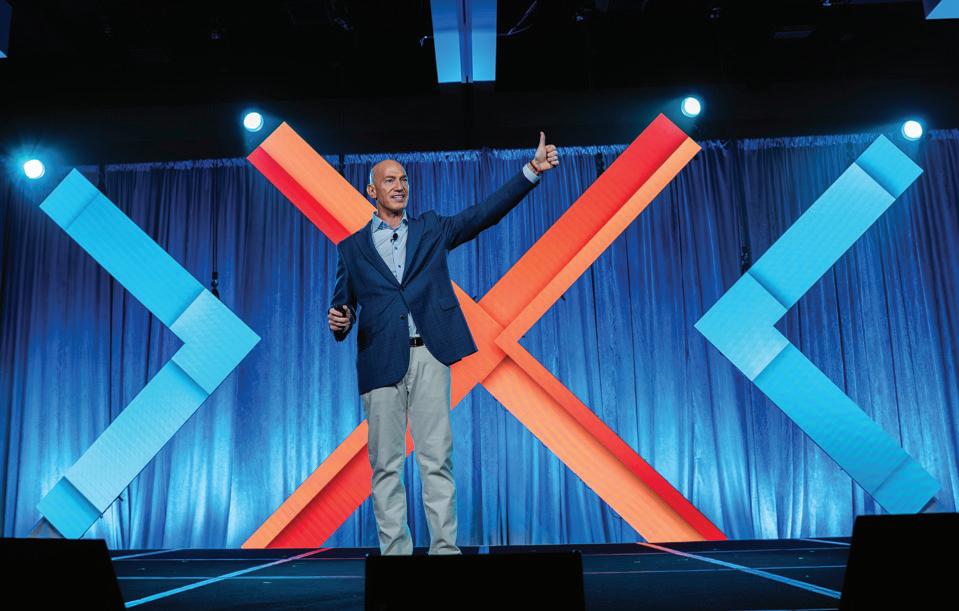
ABOUT ADAM MALAMED
EDUCATION: University of Massachusetts Amherst
EXPERIENCE:
• President and co-founder, Broadwall Capital – June 2002 – Sept. 2006
• EVP, chief operating officer and board director, Ladenburg Thalmann Financial Services – Sept. 2006 – Feb. 2020
• President and CEO, Ajax Investment Partners – Sept. 2020 – Feb. 2023
• CEO, Sanctuary Wealth – Feb. 2023 to present
and more sophisticated platforms. At the partner firm level, valuations are robust, but the highest valuations are increasingly reserved for firms that have well-established practices, combined with significant growth potential and clear continuity plans,” Malamed says.
“We stand right next to our partners, putting our capital side by side with theirs as they grow”
Contrary to many industry-watchers, Malamed does not see AI as a replacement for financial advisors. Instead, he views it as a tool for evolution.
“In any profession, those who don’t evolve beyond commoditized services and lower-value clients will likely fail in the face of disruption. And by that same token, high-performing professionals who continuously move up the value chain in the clients they serve and align with the right enterprise platforms to capture the benefits of new technologies will continue to be irreplaceable,” Malamed says.
In the near term, Malamed sees AI reducing administrative and operational burdens, enabling friction-free compliance with regulatory requirements and empowering the identification of patterns that drive a more personalized yet scalable service experience.
As for how AI will make Malamed’s job easier, he says it’s all about providing a platform that supports “the best of the best.”
“That means every Sanctuary employee across our ecosystem, including me, must be the best of the best. It’s not always easy, but it’s our commitment to excellence and our responsibility to those we serve,” Malamed says.

Mark Matson describes his firm’s emphasis on leadership, discipline, and a prudent approach to asset management
WHILE much of the industry explores and wonders what new heights technology and AI can take them to, Mark Matson is thinking the opposite.
“What can I provide that cannot be duplicated by technology? That’s the key question and it’s very difficult to answer,” says the CEO and founder of Matson Money. In an industry gripped by speculation, emotion, and fleeting trends, he’s an outlier.
But unlike most who go against the grain, Matson has been phenomenally successful in crafting a philosophy of discipline and human leadership while refusing to be outpaced by technological disruption.
SURVIVAL BY REINVENTION
For someone with such an appreciation of tech, Matson began his journey in the analog era.
“Back in 1991, we didn’t have the internet, email, or 24/7 news,” he recalls. Despite this, he foresaw that technology could be either an enabler or a destroyer of advisory firms.
His solution to becoming obsolete?
“You need to reinvent your business at least every three years because if you don’t make your business model obsolete by evolving, then somebody else is going to do it to you,” he says.
Matson didn’t expect speculation to worsen compared to the early 90s, but in his view, that’s what has happened. Trading apps enable investors to self-manage, with meme stocks and alternative assets adding fuel to the fire. He also expects quantum computing and AI to give investors more power. But he is steadfast in his belief that machines will never supersede one thing: leadership.
“A lot of investing is psychologically based,” explains Matson, who resides in Scottsdale, AZ.
To him, remaining calm in a storm and possessing deep emotional intelligence are leadership capabilities that cannot be coded into algorithms.
STRATEGIC EDGE: BEHAVIORAL COACHING
Investors have varying levels of risk tolerance, but these are often formed in a vacuum. It could be that a client states they can live with a 40 percent drop. Then, their $5 million ends up being closer to $2.5 million as they were highly allocated to the Magnificent Seven. They are also being bombarded with external forces and rolling news of an economic Armageddon.
“All of this plays on your psyche, but the investor has to imagine how it’s going to feel – the instincts and emotions,” says Matson.
“And then, to make matters worse, they have life circumstances.”
These could be anything from a spouse being diagnosed with terminal cancer or someone losing their job. Matson has developed the skills and training to ensure a disciplined response, and he advocates for others to do the same.
“The model run by AI can be hijacked by the human being, just as it can be by the advisor,” he explains. He believes most advisors fail, not due to lack of knowledge but because of their inability to override their own emotional responses.
THE HUMAN BRAIN: FRIEND AND FOE
At the core of Matson’s philosophy is a deep understanding of investor psychology. Drawing on insights from behavioral economists and neuroscientists, he outlines how biases – herding, hindsight, recency, familiarity – can undermine rational decision-making.
To counteract potentially destructive investor behaviors, Matson has built an ecosystem rooted

in education and self-awareness. His two-day “American Dream Experience” workshop is designed to shatter biases and align clients with a deeper purpose for their money – freedom, fulfillment, and love.
“Without a true purpose, the default is always speculation and gambling,” Matson asserts.
This workshop has become a powerful growth engine. On average, it generates over $45 million in new money per session. But its purpose transcends marketing; it is about awakening investors to reality.
During the tech crash of 2000, the banking crisis of 2008, and the pandemic, Matson Money undertook rebalancing – exactly as the firm had promised. However, Matson searched for evidence, such as studies or audited returns, that showed other firms across the US had done the same. He couldn’t find anything.
“I think what’s going on is a massive scam. People saying they’re going to stay disciplined and they’re going to rebalance, but they are just as skittish and volatile as their clients,” he says. “They tell their clients they are going to be flexible. What I tell investors and advisors is flexibility is the enemy of discipline.”
BEHIND THE CURTAIN
Matson is keen to point out that over a 15-year period, 85 percent of managers underperformed the market. He believes there is no way to pick out the 15 percent who will beat it.
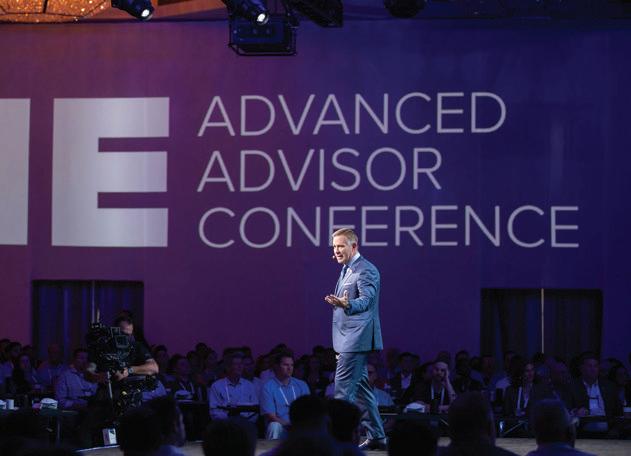
He says, “It’s a con that these mutual fund companies are perpetrating, and they know they’re perpetrating it.”
Matson rmly believes humans don’t have the instincts for investing, joking that there were no cave drawings of standard deviations.
“Emotions are powerful. They can make you breathe heavily, they can make you sweat. They can make your stomach hurt and cause you to have sleepless nights. Investors have to come to terms with the fact that they are their own worst enemy.”
He cites issues of hindsight and familiarity bias, where investors rush to put money into the companies or asset classes they hear about in the media.
Understanding and enabling advisors to transform from technical experts into true entrepreneurs is Matson’s passion. He believes most of them are in the same situation he was in several decades ago.
“I had created a very high-paying job that I couldn’t escape. They might have $200 or $300 million under management, but they’re out of ideas on how to create organic growth,” he explains.
Matson’s path can break that glass ceiling and let advisors turn their practices into substantial rms that operate independently using scalable systems, powerful marketing tools, and leadership development.
“What advisors need is not more nancial knowledge. They need different tools that let them build a business that thrives even in their absence,”
he says. “Most people think a leader is someone who creates followers, but a true leader is someone who creates other leaders. That’s what I’m looking to do in my business – create other leaders.”
At the heart of Matson’s approach is humility and a relentless thirst for evidence. He has assembled a board that in uences and mentors him, featuring neuroscientist David Eagleman of Stanford University and Terrance Odean at UC Berkeley, an expert in investor behavior. Others include the late Harry Markowitz, who won the Nobel Prize in Economic Sciences in 1990 for his work on modern portfolio theory.
During moments of market turmoil, Matson doesn’t trust his instincts. He checks in with his mentors and follows the science.
“I’m just humble enough to know that I don’t know,” he admits. This mindset extends to how he views research, often dismissing marketing-driven studies and demanding rigorous, statistical validation.
Matson states that 80 years of evidence about an asset is needed before any meaningful conclusions can be drawn about its risk and return. That’s why he shies away from bitcoin. He cites the example of Bernie Madoff’s appeal as being “voodoo” that some people believed in despite the lack of evidence.
“I need to see the science, and then I have people on my academic board and statisticians who either verify or discount what is called research today.

And a lot of the so-called research today is just marketing literature,” he says.
RESISTING INDUSTRY DOGMA
Matson developed his ability to dig into the facts and think entrepreneurially at age 10, when his father gave him a copy of the book Think and Grow Rich. This inspiration has come full circle, as Matson himself is the author of Main Street Money and the national bestseller Experiencing the American Dream
Despite being established and running a multibillion-dollar rm, Matson hasn’t forgotten the feeling of being called “toxic” by broker-dealers who asked him to never return to their rms after presenting his theories while still in his 20s.
“I always knew the odds were stacked against me, but I really always doubted that some brilliant manager would beat the market and pass on the returns to me.”
Countering any culture is tough, but Matson’s insistence on track records and engineering the brain to ght instinct is gaining wider acceptance. He says, “The message is more palatable today than it was in 1991, but that doesn’t mean I’m everybody’s favorite cup of tea. But don’t forget, I started with zero assets and my only marketing tools were a yellow pad and an overhead projector.”
For nancial advisors looking to scale their rms, and for investors seeking a disciplined and scienti c approach to money management, Matson Money offers an appealing if somewhat radical destination. Though it might not be what everybody wants to hear, Matson’s message may be exactly what the industry needs now.
500+ independent advisors
Phone: 513 204 8000
Website: matsonmoney.com
LinkedIn: linkedin.com/company/matson-money
Barkley Payne, CEO of the nonprofit organization Investing in Others, seeks to raise the profile of financial advisors who go the extra mile in charitable work
BY ANDY BURT
When Barkley Payne reflects on the recent Invest in Others Awards Gala, held in Boston, Massachusetts this past September, his first thought is of pride. Not for himself, but for the advisors and financial professionals whose charitable work the event spotlighted.
“At some point during the program Thursday night, I thought to myself, if I am a financial advisor sitting in this room, I would be so proud to be part of this community,” Payne says. “I can’t imagine anyone not leaving there feeling so proud, motivated, inspired to do their very best and to continue to keep giving back and paying it forward in the communities in which we live and work.”
The evening, which featured financial advisor awards including Community Service, Emerging Impact, and Lifetime Achievement, was a recordbreaker. Payne, who serves as CEO of Invest in Others (IIO), notes the event set four new organizational records and was punctuated by a $2 million multiyear grant from the US Charitable Gift Trust. “It was just a phenomenal evening,” he says. “Quite frankly, my team and I are still trying to process all the amazing things that happened.”
Payne’s enthusiasm is rooted in decades of nonprofit leadership. His career spans posts with the American Dental Association Foundation, the Orthopedic Research Foundation, and eight years as executive director of the American Medical Association Foundation.
When a recruiter approached him about leading Invest in Others in 2023, Payne wasn’t looking to leave the AMA. But the mission struck a chord. “When I read the job description, I heard fireworks and whistles,” he recalls. “Count me in.” IIO recognizes financial advisors across the country for the amazing charitable work they do in their communities.
The board agreed, selecting him unanimously as only the organization’s second CEO. For Payne, the decision was one of passion. “This is once again one
of the most rewarding and fun positions I’ve ever had the honor to hold,” he says.
Payne began his tenure by spearheading IIO’s first strategic plan. “It’s been a year of discovery and investment,” he explains. “As validated through the awards gala, we are taking this organization to greater heights.”
That strategy includes expanding beyond the gala. A grants program, opening this fall, will allow anyone in financial services – not just advisors – to apply for up to $20,000 in funding for their favorite
“It’s been a year of discovery and investment. As validated through our event, we are taking this organization to greater heights”
Barkley Payne, Investing in Others
charities. “Unlike the gala, which highlights the advisor’s impact, this program focuses solely on the needs of the charity and their work,” Payne says.
The power of Payne’s work lies in recognition. Each year, Invest in Others receives about 500 applications, which are reviewed anonymously by
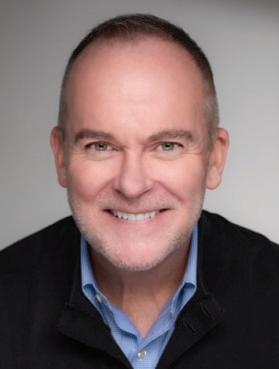
volunteer judges. The stories they uncover are deeply personal. “It’s all inspiring,” Payne says. “Everyone deserves to be celebrated.”
Perhaps most moving for Payne is the moment he personally calls the finalists. “I feel like Ed McMahon knocking on the door with the Publishers Clearing House check,” he says. “I’ve made grown men and women cry happy tears.”
He is quick to emphasize that the honorees are not in it for the spotlight. “These people are not doing this work for the recognition,” Payne says. “They have full-time jobs helping others with their financial wealth. But they pause to give back because they feel so strongly about a cause. It’s their investment into the charity.”
That ethos aligns seamlessly with the mission: “To amplify and to celebrate and inspire the work of the financial services community.”
Payne’s background in journalism has shaped his approach to storytelling in philanthropy. Early in his career, those writing skills were used for grant writing. Today, he uses them to ensure advisors’ stories are heard.
For younger advisors who may feel overwhelmed at the idea of community service so early in their careers, Payne offers practical encouragement. “If there’s a will, there’s a way,” he advises. “Going to work and getting paid is one thing. But finding time to go to work and not get paid as a volunteer, to really improve the lives of others – that kind of work is priceless. There’s no paycheck that can offer you the return on that investment.”
As Invest in Others approaches its 20th anniversary in 2026, Payne is intent on raising awareness of the organization. “The more we can spread this good news – that there is a pathway for you to increase the impact you’re having on your charity – the bigger difference we can make.”
For Payne, philanthropy is not just a career – it’s a calling. And through Invest in Others, he has found a platform to elevate the generosity, compassion, and vision of a community eager to make lasting change.



















































advisors











YOUTHFUL EXUBERANCE, along with a desire to chart their own course and practice in their own image, are the key enablers that InvestmentNews’ Rising Stars of 2025, all under the age of 40, have used to make their mark.
This extends across the winning group:
• One tells clients to “take money out of their account and spend it” and, as a result, pay him less.
• Another feels that the traditional golden rule of treating people the way you would want to be treated is outdated. Instead, she follows the “platinum rule” of treating people the way they want to be treated.
• And another believes sensing emotion is what makes them a leading advisor.
Also part of the mix is the march of roboadvisors, with their market size anticipated to grow from $9.5 billion in 2024 to $72 billion by 2032. This data, according to Polaris Market Research, predicts a CAGR of 28.8 percent. And coupled with the much-discussed succession crisis resulting from most advisors in the US being over 50 years old, this showcases the prime opportunity that the best young advisors are taking advantage of.
By developing outstanding interpersonal skills, they are connecting and building the trust that clients want. There’s no doubt that all generations seek nancial advice, but there are differences in the sources they choose, depending on demographics. For example, a Gallup poll shows the younger demographic gravitating toward in uencers on social media and nancial
websites, who offer non-personalized, and often non-professional, advice.
Integrated Financial Trust’s August 2025 report suggests young advisors must adapt to changing expectations from clients, who are looking to receive counsel on issues beyond investment, such as budgeting, credit building, and student loan management.
Despite the rise in automation and social media content, the best young advisors have built books of business, client bases, and even their own rms by understanding and relating to their clients’ personal circumstances.
This is emphasized by Kali Roberge, COO of wealth management at Beyond Your Hammock, a rm that specializes in helping high-achieving professionals in their 30s and 40s.
















“There is such a sense of fulfi llment from helping someone. We want to teach our clients about the markets and how to navigate their emotions during the ups and downs”
COURTNEY SHREWSBERRY, COASTAL 360 (STEWARD PARTNERS)
“It’s very common for young advisors to be very empathetic and interested in people, and that is such a strength. This should be a relationship business, not a transactional one,” she says. “Advisors who are eager to expand their emotional intelligence and understand things like behavioral nance and the ‘why’ behind the decisions people make will be more and more valuable, especially as AI platforms do take over some of the more rote or technical work.”
And she adds, “I don’t think anything can replace a person-to-person connection, and the younger advisors I’ve gotten to know seem very interested in genuinely helping others and providing guidance and support to real people they can relate to and empathize with.”
The Rising Stars of 2025 are the most exceptional young talent in wealth management, and all have a clear passion for the industry. These winners have earned their accolades, as the CFP Board of Standards con rmed that 2024 welcomed 6,541 new CFP® professionals, 57 percent of whom were under 35.
It’s certainly a competitive landscape on several fronts.
Roberge underlines how the leading young advisors gain insight into the inner workings of their rms so they can add value in creative and innovative ways.
She says, “Someone who has a ‘no job is beneath me’ attitude, and who is willing to try on many hats, even if they’re not committing to wearing that hat forever, stands out among a sea of young advisors who only want to jump into client meetings and have no curiosity about the million other things that go on within a business in this industry.”
ABOVE AND BEYOND
By analyzing the 2025 winners’ careers, IN presents the leading challenges they’ve had to face in the past two years and overcome to stand out against their peers.
1. Navigating market volatility and economic uncertainty
• Advisors have had to guide clients through extreme market uctuations, in ation, rising interest rates, and geopolitical events. This has required not only technical expertise but also emotional intelligence to maintain client con dence and help them stay focused on longterm goals despite anxiety and uncertainty.
2. Growing new business beyond referrals and building awareness
• Many advisors report that most of their growth has come from referrals, but expanding beyond this – especially in a crowded, competitive market – remains a signi cant challenge. Building broader awareness, differentiating their value proposition, and forming relationships earlier in clients’ nancial journeys are key hurdles.
3. Attracting, retaining, and developing top talent
• Finding and keeping exceptional team members who t the rm’s culture and standards is dif cult. This includes developing robust recruitment processes, revamping compensation structures, and fostering a collaborative, team-oriented environment rather than relying on individual books of business.
4. Adapting to rapid technological and regulatory change
• Advisors are challenged by the need to implement new software, adapt to evolving compliance requirements, and leverage digital tools without sacri cing the personal touch. Balancing innovation with regulatory obligations, and ensuring that technology enhances rather than replaces relationships, is a persistent issue.
5. Explosive growth with operational excellence and leadership development
• Rapid rm growth brings complexity: scaling processes, maintaining high service standards, and empowering others through delegation and leadership development. Advisors must shift from being hands-on “doers” to strategic leaders, building repeatable systems and strong teams while not losing the rm’s core identity or burning out.
AMERICA’S BEST WEALTH MANAGERS & ADVISORS UNDER 40
Starting in May, InvestmentNews invited nancial advice and wealth management professionals across the country to nominate their most exceptional young talent for the second annual Rising Stars list.
Nominees had to be aged 40 or under (as of October 1, 2025) and be committed to a career in wealth management, with a clear passion for the industry. Nominees were asked about their current role, key achievements, and career goals, as well as the contributions they’ve made to shaping the industry. Recommendations from managers and senior industry professionals were also taken into account.
The Rising Stars were selected by an independent panel of industry leaders composed of:
• Lindsey Lewis, The American College Center for Women in Financial Services
• Colleen Bell, Cambridge Investment Research
• Charles Failla, Sovereign Financial Group
• Chrissy Lee, Merit Financial Advisors






“The best investment you can make in yourself is your team”
GAUTAM MUTHUSAMY, ARCADIA CAPITAL
into the industry as an intern. A proactive attitude set the stage for Shrewsberry’s rise.
“Anything you gave me, I would do. I didn’t ever shy away from any extra work,” she says.
She also credits her success to being able to forge connections with clients, one of her reasons for following the “platinum rule” of treating people the way they want to be treated.



Vice president and wealth manager
Location: Naples, FL
Age: 38
Rising Star Courtney Shrewsberry already has 16 years of experience under her belt, having jumped
“Emotional intelligence is so important because we do spend so much time with [clients]. You need to be able to sit back and listen and really hear what they’re saying because we are their biggest con dants, and they’re telling us some things that are really dif cult.”
Shrewsberry’s responsibilities are split across:
• client relationship management – serving as the primary point of contact for clients
• nancial planning – developing and implementing a client’s nancial plan






Executive leadership
Advisor/manager
• investment management – constructing and managing the investment portfolio
Shrewsberry’s start, and her spells as a client associate, have instilled in her a strong client-centric focus, which is re ected in the rm’s 95 percent client retention rate. She meets with clients quarterly and maintains additional touchpoints throughout the year, regardless of what’s happening in the market. She believes in positioning clients correctly in asset allocation, always considering risk mitigation.
“Anyone can make money in an up market, but how do we really protect you on the downside? That’s always been our philosophy. So, there isn’t always a lot of pivoting for our portfolios because we’ve always put that thought into it,” she explains.
Shrewsberry works alongside her mentor and now-partner, Alicia Fuller, and has soaked up a lot of knowledge. In turn, clients gain long-term peace of mind knowing the advisor who is planning to assume the senior role in future.
Steward Partners has fostered a collegial environment, and Shrewsberry nds herself at a unique juncture.
“I can offer some advice and guidance, which is nice,” she explains. “Then there’s still things I run into in my career that it’s also nice to get feedback or ideas on from other peers.”
This speaks to Shrewsberry’s desire to keep pushing boundaries, and she vows “to never stop learning.”


Gautam MuthusamyArcadia Capital

President and managing partner
Location: Saline, MI
Age: 34
There’s no greater validation in the industry than going from $160 million to $1.8 billion AUM in eight years, and that’s what this Rising Star has overseen. Gautam Muthusamy credits it to a fundamental bedrock.
“The equation was fairly straightforward – let’s get bigger assets and work with those clients and give them top-level service, and then they will send referrals, and we will organically grow,” he says.
As part of his day-to-day, Muthusamy guides clients through complex planning, investment, and legacy decisions. Internally, he oversees the operations of his 16-person team, fostering a collaborative, service-oriented culture that empowers each advisor and team member. This is driven by Muthusamy’s hunger, which stems from growing up as the son of immigrants.
“Dad went to work from morning to evening, and when he got home, my mom went to work. Seeing that, a work ethic was woven into me,” he
explains. “And now, when people ask me, ‘What are your hours?,’ I say, ‘I don’t have hours; I’m always working.’ ”
A skill that Muthusamy stresses is listening, which is what he looks for in advisors who want to join his team.
“It’s really hard to nd top-tier and high-quality people, but when we do, we want to do everything we can to recruit them,” he says.
To ensure a good t on both sides, Muthusamy has developed an interview process that includes a DISC assessment, quantitative evaluations, interviews, and case studies. While not awless, the process identi es candidates who would thrive in Arcadia’s collaborative and highperformance culture.
There is also a serious focus on developing staff, as Arcadia pays for employees to undertake their CFP and other courses.
Muthusamy acknowledges that AI and tech have handed certain tools to clients in terms of the information they can access, but he stresses that, rst and foremost, clients still seek an advisor they can trust and bond with. This is a strength of Arcadia’s, evidenced by the steep rise in AUM despite not undertaking any major marketing.
“We are more inclined to not lose clients’ money rst and grow it second. I know some other rms have that reversed, but it works well for us.”
To ensure service levels continue to improve, Muthusamy is open to embracing tech, such as





platforms that cut down the administrative side of estate planning.
“If the technology can take the tedious part and the not overly complex, and make that solvable very quickly, then that makes more time for the advisor to spend on the relationship and the actual problem at hand,” he says.
Keen to continue developing, Muthusamy invests in himself and has been consulting with executive coach Soojin Kwon for several years. She looks at both his professional and personal lives.
He says, “It’s about understanding how they might work together, and the most recent example is becoming a father. My son just turned two, and I understand there’s going to be some nights that I’m at the of ce late. Are there ways to maybe balance things by utilizing the team?”
Over the last year and due to economic uncertainty, Arcadia’s clients have experienced a range of emotions, from positive to negative. But the team has led them through it all, under the guidance of Muthusamy, who chairs the rm’s investment policy committee. He has made a point of including more experienced advisors, some of whom have slowed down from their younger days but have learned valuable lessons.
Muthusamy adds, “As the younger generation of advisors, we get the bene t of their experience by having them on the committee, and then we have the time to eld the phone calls and work with the clients. Two minds are better than one.”
His vision is to continue building Arcadia on the foundation of two principles:
• delivering an unmatched client experience • fostering a culture where team members feel valued, empowered, and inspired
Muthusamy also serves on the Raymond James National Technology Council, giving advice on how to improve platforms and tools for both advisors and clients, along with collaborating with emerging ntech companies to help design technology that better serves advisors, elevates the client experience, and, as a result, pushes the profession forward.









enabled the Rising Star to currently manage over $90 million in assets for nearly 500 different households.
Trethewey’s success has been driven by her proactive approach to identifying and addressing clients’ unique nancial needs.
“I’ve always been very empathetic and good at sensing the emotions of people around me. I think that has given me strength as an advisor because I can anticipate the needs of my clients on a different emotional level,” she says.
By integrating personalized strategies and leveraging her expertise in 403(b), 401(k), and Roth investments, she has helped clients navigate complex nancial landscapes.
With this economic backdrop, Trethewey says it’s essential to create an individualized plan.
“In times like these, maybe we’re redirecting our plan a little bit. Maybe we’re not saving as aggressively or we’re creating a different spending strategy if they’re already in retirement,” she says. “It’s so situational to that individual person or that household.”
She also feels that part of being a top advisor is acting as a “relationship coach,” and she makes a point of never turning things into a “steamrolling sales kind of relationship.”
Trethewey’s career began at entry level and, from there, she hit her stride and now holds designations including Certi ed Plan Fiduciary Advisor® (CPFA®) and Certi ed Retirement Education Specialist (CRES).
“I’m one of those people who never say no to things, and I want to constantly be growing and moving. I added my licenses, various designations, started taking on clients, and [my career has] morphed into what it is today.”
Operating in an atypical environment also suits Trethewey’s style, with EFS Advisors having a more relaxed atmosphere and employees who share experiences and provide mentorship. She says, “I’m fortunate to be around such great people.”
Part of this teaching has given her the skill to set expectations. While high-net-worth individuals often have an easier path, that is not always the case.
“I have clients on the other end, where, for whatever reason, they’re just not there and they probably won’t ever get there,” she explains.
“I’m never going to say that they’re all going to be super successful because I’m this, like, second coming.”
To demonstrate this, Trethewey relies on the analogy of the three little pigs building a house and the need for a strong foundation in order to install a roof.


Financial advisor
Location: Cambridge, MN
Age: 32

Over the past year, Rebecca Trethewey has expanded her services to include comprehensive nancial planning, coordination of employee bene ts, and specialized retirement planning for educators and public employees. This has
She adds, “You’re starting with budgeting and early savings, and then, depending on the situation, we’re working toward that end goal or what’s attainable.”
Eager to share her insights outside of her core role, Trethewey hosts an annual event and covers all the expenses for local women in the community and clients to be educated on various topics.
She says, “This year, I’m partnering with a local nonpro t, which is a caregiving consultant group, to talk about how you recognize when you’re the caregiver and how you use the services to be the most ef cient caregiver, while also taking care of the other person without getting burnout.”











“I’m very passionate about coaching. I would love to mentor another young female advisor and keep building this trajectory of having more females in this space”


In addition, she is a board member of the North 65 Area Chamber of Commerce in Isanti, MN, contributing to local business growth and networking opportunities, and is also part of the National Tax-Deferred Savings Association, which aims to enhance the nancial con dence of one million women over the next ve years.
“I’ve hosted a couple of their events called Rai$e Her, and I’m going to continue these over the next ve years,” she explains.
All of these efforts are about trying to share insight that isn’t always taught formally.
Trethewey adds, “If you’re able to articulate your knowledge without being overpowering or condescending, that will bring you so far in life, and I hope it continues for me.”
products, which means we can actually get a custom agreement.”
He adds, “I believe that if you don’t do structured notes for your clients, you either don’t have access to them or you don’t understand them. But the most no-brainer thing for someone to have in their nancial plan is some actual xed income.”
Enjoying life is the reason why Mijares encourages his clients to spend their money, even though it means he will earn less as their assets decline. This applies even more to his wealthier clients.
“They’ve got the money because they saved and were hard workers, and they never knew how to spend it. This may be controversial, but I really enjoy helping clients spend their money as I think it boosts quality of life,” he says.
REBECCA TRETHEWEY, EFS ADVISORS


“My only goal is to help my clients reach their goals”
LUCAS MIJARES, ZION CAPITAL
As part of our editorial process, Key Media’s researchers interviewed the subject matter expert below for an independent analysis of this report and its ndings.

Kali Roberge Chief Operations Of cer of Wealth Management,
Beyond Your Hammock beyondyourhammock.com


Lucas MijaresZion Capital


Founder and wealth advisor
Location: Grass Valley, CA
Age: 34
Most up-and-coming advisors would be satis ed with an AUM of $125 million and a contented client base, but Rising Star Lucas Mijares felt he could do more. The entrepreneur left Edward Jones after almost a decade to build his own rm, which now boasts $260 million AUM.
He says, “I feel like I’m just getting started, and I also have the breathing room and a con dence that comes with having the practice we have now.”
For Mijares, being able to inspire clients was foreshadowed by doing the same among colleagues. When he was launching Zion Capital with his business partner, a few assistants also made the move and were soon joined by additional advisors.
“We had to build the infrastructure because I knew I could get clients,” explains Mijares. “I wanted my clients to have a rich experience. I didn’t want anybody to think that I was leaving for my own good. I wanted them to thoroughly believe I left for the greater good of my clients and to be able to serve them better.”
Part of this process is how Mijares can be more exible and pivot to alternative investments, which larger and more established rms would be unable to take advantage of so nimbly.
“When you’re an entrepreneur, you get to go in whatever direction you want to go. In the ntech world, there are countless different companies out there, which allow you to either further serve someone and scale your business.”
One of Mijares’ skills is developing a culture that drives success. Zion Capital is made up of individuals in a similar age group who are also strongly family oriented. His wife even decorated the of ce to create an environment that was welcoming for all.
With a client niche of pre-retirees and retirees, Mijares understands the need for income.
“Passive income can be a buzzword online, but there’s really nothing passive about it. It doesn’t just happen in thin air,” he says. “We’re able to use alternative investments like structured
Despite this, Mijares is focused on revenue, but he prioritizes his clients’ well-being.
He adds, “I’m not saying making money is a bad thing as I make a tremendous amount of money. It’s more that when you choose making money over helping a client, you’re of cially in the wrong, and I never want to irt with that line.”
Along with building his rm, Mijares has earned a collection of designations including being an Accredited Asset Management Specialist, a Chartered Retirement Planning Counselor, and a Certi ed Kingdom Advisor, on top of his CFP.
The goal was not to impress clients with what he refers to as the “alphabet soup after my name,” but to be informed and plugged in across the board.
“For my clients, being able to ask me a question, and for me to be able to not look down at my phone or computer to answer, is powerful.”
With the in ux of AI and tech becoming a bigger part of the industry, Mijares is quick to point out that the human emotion of making good decisions will never be replaced.
“Investment advice and counsel is becoming a lost art,” he says.
However, he believes there is an untapped population who want help with their nances, and he feels particularly connected to those with a mindset of taking things to the next level.
“I’m a really good t for people like that because I don’t have a quota. I make more money than I need, and I want to help clients win,” he explains. “If I happen to make more money doing that, then wonderful, but if I can sacri ce my paycheck to make an impact on people’s lives, then that’s great.”
Zion Capital’s culture is built on integrity, alignment, and mission, interlinking with Mijares’ belief that the industry needs more people who live what they preach. To this end, his career goals are clear:
• continue scaling Zion Capital into one of the most trusted, values-driven wealth management rms in the country
• build a lasting rm culture that re ects faith, character, and excellence
• equip the next generation of advisors to serve with conviction and impact
• be a thought leader in the industry, not just on nancial strategies but on how to lead with integrity, balance, and purpose





Danielle White
Chief Executive Of cer, Myriad Advisor Solutions
Phone: 515 850 1212
Email: info@myriadas.com
Website: myriadas.com
Gautam Muthusamy
President, Arcadia Capital
Phone: 734 429 3971
Email: gautam@investarcadia.com
Website: investarcadia.com
Lucas Mijares
Founder and Wealth Advisor, Zion Capital
Phone: 530 955 5402
Email: lucas@zioncapital.io
Website: zioncapital.io
Michael Lee


Wealth Advisor and Focus Team Lead, Farther
Phone: 510 335 8808
Email: michael.lee@farther.com
Website: farther.com
Abbie Sheridan
Chief Executive Of cer, Greenrose Communications
Phone: 516 286 7056
Email: abbie@greenrosepr.com
Website: greenrosepr.com
Dan Routh, CFP®
Partner, Senior Advisor, Old Peak Finance
Phone: 919 459 8181













Email: dan.routh@oldpeak nance.com
Website: oldpeak nance.com
Patrick Quinn
Phone: 646 864 8054
Email: pquinn@cioninvestments.com
Website: cioninvestments.com
Rebecca Trethewey Financial Advisor, EFS Advisors
Phone: 763 552 6057
Email: rebeccat@efsadvisors.com






Head of Business and Legal Affairs, General Counsel, CION Investments

Website: rebeccatrethewey.efsadvisors.com
Sarah Irving Partner, Senior Financial Advisor, Meridian Financial Partners
Phone: 540 878 5416

Email: liz@meridian nancialpartners.com
Website: meridian nancialpartners.com

Audrey Hixson
Assistant Vice President, Service Experience, Cambridge Investment Research Inc.
Phone: 877 688 2369
Email: audrey.hixson@cir2.com
Website: joincambridge.com
Cody Phelps
Field Vice President and Enterprise Leader, Jordan Creek Financial Solutions
Phone: 515 727 6717
Email: cody.phelps@jordancreekfs.com
Website: jordancreekfs.com/our- rm
Joseph D. Spina, CIMA®, CFP®, CEPA Vice President, Private Wealth Advisor, Northeast Private Wealth Management
Phone: 516 405 3888
Email: joseph.spina@neprivatewealth.com
Website: neprivatewealth.com
Lowell Lyon Partner, Ardea Fiduciary Advisors
Phone: 781 728 5222
Email: lowell@ardeafa.com Website: ardeafa.com
Parker Ence CEO and Co-founder, Jump
Email: hello@jumpapp.com Website: jump.ai
Adriene McCance SVP, General Manager of Wealth, Uptiq AI
Alec Rosen Director of Growth, Connecticut Wealth Management
Alex Farman-Farmaian Co-founder and Co-CEO, Compound Planning
Alexandra Zendrian Founder, AtoZ Communications
Alli Jordan President and CEO, LibertyFi
Andree Mohr President, Integrated Partners


Brendan Frazier Chief Behavioral Of cer, RFG Advisory
Brian Parke Principal and Senior Wealth Manager, Connecticut Capital Management Group LLC





Brittany Webb Senior Associate, Cerity Partners
Carlos Dias Jr. President and CEO, Dias Wealth
CJ Miller Partner and Executive Financial Planner, Sensible Money
Cody Garrett, CFP® Owner and Financial Planner, Measure Twice
Corbin Foster Director, Wealth Advisor, Greenwood Gearhart
Cormac Murphy Chief Investment Of cer/Chief Executive Of cer, Adams Wealth Advisors/CacheTech Advisor Solutions
Courtney M. Shrewsberry Vice President and Wealth Manager, Coastal 360 (Steward Partners)
Dan Bolton Head of Marketing, Wealth.com
Danny Lohr nk Co-founder and Chief Product Of cer, Wealth.com
Danny McAuliffe Wealth Advisor, Perigon Wealth Management
Darcy Nelson Smoot Principal and Certi ed Investment Of cer, Nelson Capital Management
Dinon Hughes Partner, Nvest Financial
Doug Scott CEO and Co-founder, Ethic
Elizabeth Lenz Managing Director, Concurrent Investment Advisors
Austin Storck Financial Advisor, Borza Storck Wealth Management of Raymond James
Brandon Tutak Senior Principal, Cerity Partners
Eric Ashburn Partner, Private Wealth Advisor, Argent Bridge Advisors
Frederic Alain Behrens Partner, International Investment Advisor, Cerity Partners






Greg Giardino VP, Financial Advisor, Wealth Enhancement
Gregory Fortier Financial Advisor, Centinel Financial Group
James Comblo Chief Executive Of cer, FSC Wealth Advisors
Jeremy Runnels, CFP® Partner, Wealth Management, Cerity Partners
Jett Moore, CFP® Director, Wealth Advisor, Greenwood Gearhart
John Troncoso Financial Advisor, Jaffe Tilchin Wealth Management
Joy Lere Co-Founder, Licensed Clinical Psychologist, Shaping Wealth
Katie Pickler Vice President, Pickler Wealth Advisors
Krista Baumgardner Director, Wealth Management, Choreo

Charles “Chuck” Failla, CFP® Founder and Chief Executive Of cer, Sovereign Financial Group
Kyle Blackwell Financial Advisor, Steward Partners
Lauren Rowland Principal, RZH Advisors
Madison Blalock, CFP®, CPWA Director, Wealth Advisor, Greenwood Gearhart
Marcus Welnel Financial Advisor, SG Long Financial
Michelle Borkowski Head of Marketing, F2 Strategy
Nicholas Garcia Principal Wealth Advisor, Compound Planning
Nikhil Kumar Senior Portfolio Manager, Hartree Partners
Nisiar Smith President and Financial Advisor, Courtside Wealth Partners
Seungwoo Son VP of Applied AI, Wealth.com


Slone Alley Founder and Financial Advisor, Green Hills Advisory LLC
Stephen Hart Senior Wealth Advisor, Director of Financial Planning, Generational Wealth Advisors
Susy Thomas Vice President, Grunden Financial Advisory Inc.
Tara Shulman Principal Wealth Advisor, Compound Planning
Taryn Bertetto Wealth Manager, Steward Partners
Travis Jensen Founder and Advisor, Jensen Complete Wealth
Trisha Qualy Managing Partner, Af liated Advisors
Zach McCown Senior Vice President, Wealth Manager, Steward Partners
Zachary (Zach) Q. Carver, CFP®, CFP® Senior Principal and Tax Advisor, Cerity Partners



Chrissy Lee Chief Operating Of cer, Merit Financial Advisors

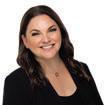
Colleen Bell President, Innovation and Experience, Cambridge Investment Research
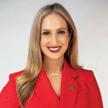
Lindsey Lewis Managing Director and Chair, The American College Center for Women in Financial Services
to
to solve their efficiency problems, but is it just a short-term patch for long-term problems that need a non-AI fix?
When enterprise firms grow and merge together over time, they accumulate technical debt. Technologies, capabilities, and processes that, in a perfect world, would be re-architected and improved each time the enterprise grows bigger or merges with another firm instead get cobbled together and strung along through short-term patches due to a combination of resource constraints and simple inertia. Technical debt can accumulate for years or decades – for example, a surprising number of government and payment systems still run on 1970s-era COBOL code, despite a dwindling number of programmers fluent in it – and is often addressed only when a critical system breaks and short-term patches are no longer enough to fix it.
OPINION
MICHAEL KITCES AND BEN HENRY-MORELAND
But while it’s easy to criticize organizations for accumulating technical debt instead of simply keeping their systems continuously up to date, the reality is that some amount of technical debt is inevitable in almost any organization. Particularly in situations where companies merge, integrating one firm’s systems with the other means resolving innumerable conflicts between technology, processes, and workflows. And with limited amounts of people and time to sort out every single issue, firms need to triage to make sure the most important problems get the highest priority – with the inevitable result being that the issues that can be more easily solved with a short-term patch than with a long-term fix, or that don’t pose a threat to any critical systems, are set aside until the point that they do become a problem. In other words, like the finance world, not all debt is bad, and sometimes there are prudent uses of a little (technical) debt leverage!
Still, when a system or process becomes so out of date that it imposes a meaningful drag on productivity, it can be worth investing in ways to update it. The question then is whether to tear the whole thing down and rebuild it in the way it would be if it were being built
from scratch or to apply another quick fix to improve things (which inevitably leads to the problem resurfacing again in a few years, repeating the scenario). The answer invariably depends on the cost in time and resources for both options and how near the issue is to the critical systems that keep the firm up and running. It appears that in the post-AI world, the calculus has changed somewhat around which issues demand a complete rebuild and which can be resolved with a shortterm stopgap. For example, LPL Financial has recently announced a new AI-powered tool that will purportedly allow advisors to more easily navigate their complex payout grids and understand “how to earn more.” Which, in a vacuum, seems like a good example of an investment in AI, since AI can be ideal for pulling together complex information into a simple, easily understandable format, and helping advisors increase their pay can at minimum result in happier advisors who are more likely to stick with LPL, and can maybe also generate additional revenue for LPL. But at the same time, the AI tool doesn’t solve the underlying issue – that LPL’s payout system is so complex that it requires an AI tool just to understand it. Simplifying the payout structure so that advisors can clearly understand their own compensation would be more beneficial for both advisors and their clients in the long run, but for now, AI can serve as a workaround that gives advisors a little more clarity without requiring a complete retooling of employment agreements and pay grids.
In other cases, enterprises are employing AI as an overlay to improve legacy processes to the point where they are at least closer to what they would be if they were rebuilt with modern non-AI technology. For instance, Cambridge Investment Research has announced its own AI-driven tool that reportedly reduces the time it takes to open an account from nine days down to “just” 17 minutes. Which again represents a meaningful improvement in efficiency given the time savings per account over thousands of accounts per year opened at Cambridge. But in a world where custodians from Betterment to Altruist to even legacy players like Charles Schwab allow for nearly instantaneous paperless account opening without using

AI, Cambridge’s announcement serves as more of a commentary on the technical debt of their systems than as a groundbreaking new use of the technology. Again, while the optimal path in hindsight would have been to make technological improvements to integrate and simplify systems, rather than to stack so many legacy systems on top of one another that an AI is needed to knit them all together, the existence of AI allows Cambridge to defer having to invest in making more fundamental updates to its systems while still implementing an expedient improvement that really does improve on their near-term productivity and advisor support.
The broader question in such cases where large enterprises rely on AI tools to “fix” problems created by technical debt is whether AI itself is the long-term solution or if it represents just another short-term stopgap that will inevitably need addressing in a few years. It still takes a lot of resources to rebuild an existing technology, or to rip it out and replace it from scratch, and with AI as a potentially cheaper solution to an increasingly complex set of problems, it will be tempting for enterprises to use AI as a Band-Aid to provide relief in the short term. But in reality, such thinking is exactly how technical debt is created and accumulated to begin with: by prioritizing
short-term expedient solutions rather than making substantial investments to solve the core problem. Which suggests that in the future, AI will find even more use as a way to patch together legacy systems rather than rebuild them (including systems that are already being patched together with AI!), as a way to extend technical debt rather than a path to pay it down.
So amid the pervasive hype that has surrounded AI and the claims of AI replacing broad swathes of workers across the economy, it’s worth recognizing that, at least among some of the largest enterprise employers in the advisory industry, one of the most concrete impactful uses of AI has been simply to bring systems and processes up to get closer to the point where they would have already been if the firms had been able to allocate the time and resources to keep them up to date along the way. Which may certainly represent some material improvements for those businesses given that even incremental improvements in efficiency can add up to a substantial impact over the scale of a mega-enterprise. But it’s a far way off from the promise of AI as the productivity revolution of the future when in the present, it’s proving more useful as a short-term loan to pay off long-term technical debt.
Wealth managers are nally giving international equities a second look
BY GREGG GREENBERG
Americans who failed to jet off to Europe − or even more exotic locales − when the pandemic was ending and the dollar was surging are getting a second chance for international fun. This time, they don’t even have to leave home.
International stocks are enjoying breakout performances this year, in many cases leaving their US counterparts far behind. It’s a big turnaround from the past few years when American stock indexes proved to be world-beaters.
As of mid-September, the S&P 500 was up a not-too-shabby 13 percent for the year. This is even more impressive considering the index that tracks America’s largest public companies returned 25 percent in 2024 and 26 percent in 2023, including dividends. (Of course, the S&P 500 did have a major stumble in 2022, sinking by more than 18 percent. But the recovery rally through 2025 to date has still been nothing short of a tidal wave.)
But now check out the goings on in foreign stocks so far in 2025.
European stock returns through mid-September, as represented by the iShares Europe ETF (IEV), were up 25 percent, almost double the S&P’s return. Emerging market stocks, as embodied by the iShares MSCI Emerging Markets ETF (EEM), rose 26 percent over the period.
Meanwhile, Chinese stocks are enjoying a spectacular run this year, despite tariff and trade uncertainty, as evidenced by iShares China Large-Cap ETF (FXI) rising 35 percent. Even Japanese stocks are strong, with the widely held iShares MSCI Japan ETF (EWJ) up over 20 percent in the period.
As to what’s driving the bull run in foreign stocks and whether it will sustain its lead over US equities, advisors say it re ects global investors reacting to Trump-era trade risks, fading US exceptionalism, and a sharply weaker US dollar. In advisors’ view, these and other forces created a powerful catchup trade and will continue to help funnel capital overseas in an investor rotation out of expensive US assets.
That said, some strategists, including Jim Thorne, chief market strategist at Wellington-Altus Private
Wealth, feel these fears are likely overstated and the recent foreign domination may be short-lived.
“US earnings power and innovation remain unmatched, and as valuations recalibrate, the period of international and emerging market outperformance may soon run its course,” Thorne says.
Andrew Almeida, director of investments at XYPN, believes this year’s performance in international markets has been predominantly driven by

2025 FOREIGN STOCK PERFORMANCE (THROUGH SEP 19)
US: S&P 500 +13%
Europe: iShares Europe ETF (IEV) +25%
Emerging markets: iShares MSCI Emerging Markets ETF (EEM) +26%
China: iShares China Large-Cap ETF (FXI) +35%
Japan: iShares MSCI Japan ETF (EWJ) +20%
or diversi ed European mutual funds rather than concentrated stock picks.
Randy Carver, president and CEO of Carver Financial Services, agrees that European stocks still face notable risks despite their impressive performance to date, including modest growth, political instability, in ation pressures, and heavy reliance on global trade. Given these vulnerabilities, he remains cautious and is
“In short, the outlook for emerging markets (EM) remains cautiously optimistic, with long-term fundamentals supportive, but investors should expect a bumpier ride going forward”
RANDY CARVER, CARVER FINANCIAL SERVICES
dollar weakness and price movement off deeply depressed “base-level” valuations globally as compared to the US.
“We think a majority of the movement down in the dollar is baked into the forecast for next year, with more visibility into rate cuts. Thus, the bene t to global equities from dollar weakness will contribute a lower magnitude toward nominal international returns for next year,” Almeida says.
European equities have bene ted from a receding US dollar, discounted valuations, and global rotation out of expensive US assets. But this has been a catch-up rally on valuation, not on earnings power, according to Thorne.
“The performance gap may have closed; without renewed earnings drivers, further upside likely fades as fundamentals reassert. A possible sovereign debt crisis, over regulation, does not bode well for long-term European fundamentals,” Thorne says.
Due to his caution on the region, he recommends a modest 3−5 percent allocation, preferably via ETFs
therefore minimizing overall foreign exposure to 10−15 percent of his portfolio.
“At the end of the day, we believe that people should have some international exposure and believe that emerging markets still offers growth potential, but we are heavily weighting to the US,” Carver says.
On the ip side, Stuart Katz, chief investment of cer with Robertson Stephens, is still constructive on Europe. He points out that expectations for European equities were extremely low at the beginning of the year, when they traded at a multidecade P/E discount versus US equities and traded at a discount to historical averages compared to their own history. After this year’s rally, they’re still trading at a historically cheap discount to the longterm average discount to the US.
“While no longer cheap versus their own historical averages, the appreciation is re ective of the ‘game-changing’ multi-year scal spending catalyst announced this year. In some sectors, like defense, this has been priced in, where valuations may appear to some investors less attractive, but generally this is a long-term catalyst,” Katz says.
Record-high valuation gaps versus developed markets
Improving quality and diversity of opportunities
Accommodative central banks
Increasing trade among EM countries
The sharp early gains in EM are already in the books, but Carver believes the backdrop of moderating US policy, resilient growth, and ongoing structural tailwinds can keep the story going, albeit with more volatility and dispersion across countries.
“In short, the outlook remains cautiously optimistic, with long-term fundamentals supportive, but investors should expect a bumpier ride going forward,” Carver says, adding that he generally allocates 5−10 percent in EM while avoiding China − for example, with Columbia EM Core ex-China ETF (XCEM).
Robertson Stephens’ Katz is also sticking with EM stocks, saying they remain attractive given record-high valuation gaps versus developed markets, improving quality and diversity of opportunities, accommodative central banks, increasing trade among the EM countries, and the potential for further USD weakness.
Wellington-Altus’ Thorne sees EM fundamentals still lagging the world-leading pace of US innovation, which he feels is “easy to overlook in a catch-up cycle.” In his opinion, a continuation of the EM rally depends on global liquidity, the path of the dollar, and whether EM earnings momentum can sustain relative to US tech leadership. As a result, he says a prudent allocation is 3−5 percent of client portfolios, primarily using liquid, diversified vehicles like broad ETFs or actively managed EM funds.
“I would focus on India, which leads on domestic growth and reform, and select tech/geopolitical winners. Individual equity selection is challenging given country and sector dispersion,” Thorne says.
The macro drivers of Japanese growth have changed somewhat this year, according to Katz. Back in 2023 and 2024, the main driver was the yen’s weakness, benefiting exporters. Obviously, that is a double-edged sword for US investors. Now it is reflation and interest rate/yield curve normalization, benefiting more domestic companies, in Katz’s opinion.
“Remember, the Bank of Japan (BOJ) policy rate was negative for eight years until early 2024, whereas it was raised to +0.5 percent in January, with prospects for further hikes. CPI inflation is still over 3 percent. Ultimately, that is driving accelerating


“While no longer cheap versus their own historical averages, the appreciation in European stocks is reflective of the ‘game-changing’ multi-year fiscal spending catalyst announced this year”
STUART KATZ, ROBERTSON STEPHENS
nominal GDP growth to mid-single-digit levels for the first time since the 1980s and helping the yen stabilize/strengthen,” Katz says.
The longer-term question is how consumer and corporate behaviors and spending patterns will change as Japan moves out of its longstanding disinflationary environment. Bulls can also point to a general underlying dynamic of improving corporate governance, disclosure, and capital discipline in Japan, encouraged by the Tokyo Stock Exchange.
Thorne also sees Japanese equities benefiting from needed structural reforms, improved corporate governance, and a weaker yen. Put them all together and it supports higher valuations and international inflows, in his view.
“These changes differentiate Japan from a typical catch-up thesis and position it for more sustainable gains,” Thorne says, adding that the recent resignation of the prime minister suggests a “shift back to the center” in both politics and economic policies.

FORMER PAYPAL and Intuit
CEO Bill Harris has launched Evergreen Wealth, a digital RIA he says is being self-funded with over $10 million of his own capital.
Evergreen Wealth’s tech-driven platform includes an AI advice engine for providing automated financial advice, investment portfolio analysis, and tax planning.
ALMOST TWO years after joining Franklin Templeton to head up its US wealth management division, Jonathan Kingery is on the move again.
Having been with the firm since
IT’S A new era at Chilton Trust as it names a new president and CEO to lead it forward.
The privately owned independent wealth firm has tapped Jennifer Lee
“We’re today announcing the dynamic portfolio, which is a tax optimized, personalized, diversified way to manage your money,” Harris said. “What is the enabling technology? It’s raw computer power. It’s the chips today that could do so much more than they could do when I started my last investment advisor, Personal Capital.”

2019, previously as head of private wealth and RIA, Kingery has joined DoubleLine Capital as chief distribution officer covering the US and leading the firm’s engagement strategy with institutional investors and consultants, wirehouses, independent broker-dealers, RIAs, and sub-advisory and national accounts.
Kingery announced his departure from Franklin in a LinkedIn post, citing a “period of deep reflection and an incredible journey” but also the desire to “further expand my experience and sharpen my ability to serve others.”

as its next president and chief executive, effective October 6.
Lee, who brings more than three decades of private wealth experience, will report to founder and chairman Richard Lockwood Chilton Jr. She succeeds Peter Kim, who returns to his previous roles as general counsel and chief compliance officer after serving as interim president for over a year.
Before Kim, Chilton Trust was led by Pepper Anderson, who held the president and CEO position from 2019 until May of last year.
BOGART WEALTH plans to offer equity to all employees by the end of this year, the CEO of the fast-growing Virginiabased RIA tells InvestmentNews
“At the end of this year, every employee is going to have equity, and part of annual compensation will include profit interest rates going forward,” says James Bogart, who scaled his firm from roughly $600 million in 2020 to over $3 billion AUM.
Bogart’s team currently spans 55 employees, including 12 advisors and four associate advisors. Compensation is set into two structures. “Advisors get paid a percentage of the revenue that they’re responsible for, and that percentage changes based upon the size of the revenue. For non-advisors, it’s a base plus bonus type of compensation model,” Bogart says.
Bogart is the majority owner of his firm, which took minority investment from Constellation Wealth Capital in January. Bogart Wealth’s shift toward employee
SAVVY WEALTH named Anshul Sharma as its new chief investment officer, marking another step in the digital-first RIA’s ongoing effort to scale its investment platform and broaden its reach with high-net-worth clients.
Sharma, who brings more than 25 years of experience from firms including Bank of America, US Trust, and Merrill Lynch, will be responsible for building Savvy’s first institutional-grade invest-
equity is part of a broader trend in the RIA space that’s seen firms such as Mercer, HB Wealth, Snowden Lane Partners, and Steward Partners roll out similar models to recruit and retain talent.
“It is a very competitive market for human capital − I call it the war of human capital right now,” says Bogart. “If you’re not getting compensation right, and you’re not giving them pathways to grow and create value for themselves, they’re going to leave.”
Bogart Wealth has had minimal attrition, losing just two employees over the last three years. Despite industrywide concerns of fee compression for advisors, Bogart says his firm increased fees last year while expanding its client services around taxes, trusts, and estate planning.
In 2021, Bogart launched Advisor Growth Track, an on-the-job mentorship and training program for early-career advisors. “We had 89 people apply for four spots last year. So it’s clearly

ment office. The move comes as the New York-based firm reports surpassing $3 billion in assets under management. The firm said it aims to enhance its investment platform beyond its current offerings, which include direct indexed portfolios, alternatives, and thematic strategies.
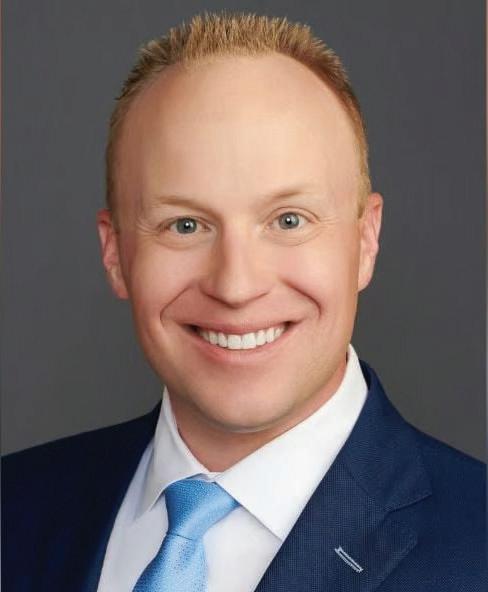
JAMES BOGART
“At the end of this year, every employee is going to have equity, and part of annual compensation will include profit interest rates going forward”
JAMES
BOGART, BOGART WEALTH
a product that is in high demand, and it’s really captivating to that nextgeneration advisor.”
The RIA’s growth to date has been entirely organic, through growing client relationships and attracting new clients, which Bogart credits in part due to the firm’s daily financial education content production. “We’re giving it all away
for free,” he says. “And that’s working because what it allows us to do is, our clients can introduce their friends in a very soft manner without a solicitation. Their friends can introduce their friends, etc.”
Bogart’s stated goal is for his firm to hit $22 billion in AUM by 2033. He anticipates starting to soon enter the M&A market to help reach this mark.
As RIAs embrace these changes, early communication is critical, said CW Advisors CEO Scott Dell’Orfano. His Boston-based $13.5 billion RIA holds a unique vantage point on M&A transitions, having made nearly 20 deals to buy firms over the past couple of years before CW was acquired by Osaic in June.
“As soon as you know you’re going through this process, I would make sure you begin communication with your employees as to what’s happening and why,” said Dell’Orfano.
AS INFLATION continues to take a toll on households and the labor market continues to soften, a new trend is starting to take hold across the US job market.
While there’s no data yet to show its prevalence, “job hugging” has become the new buzzword to watch.
Consulting firms and experts say the phenomenon is on the rise as workers across the board see increasing risks of being let go in the

next year or so. Apart from headlines of mass layoffs from some of the largest firms, the BLS has issued a string of discouraging readings and revisions pointing to a softening job market over the summer.

operations in the US, Canada, Puerto Rico, the UK, and Ireland, including Wealthspire Advisors, Fiducient Advisors, Newport Private Wealth, and related platforms.
AON IS to sell the majority of its NFP wealth business to a private equity firm based in Chicago. The global company’s subsidiary has wealth and retirement advisory
These business units will be acquired by Madison Dearborn Partners, LLC, as part of Aon’s sharpened focus on its core insurance operations, with current Wealthspire CEO Michael LaMena as CEO and Carl Nelson, currently head of M&A for NFP, as president of the company, which will have a new unified brand name.

RIA M&A activity continues to reach new heights. Fidelity reported the first half of 2025 produced 132 transactions, totaling $182.7 billion in assets.

MODERN WEALTH MANAGEMENT has acquired PSF/Galloway, an RIA managing $1.1 billion in assets for clients from police and fire departments. The acquisition spurs its launch of Public Safety Financial, a new division to serve their pension and financial planning needs.
PSF/Galloway marks Modern Wealth Management’s entry into Arizona, where it will launch its second “Organic Growth Hub,” joining its original hub in Kansas City. The RIA plans to reach 150 employees in the Phoenix area. The PSF/Galloway acquisition pushes Modern Wealth past $10 billion AUM as its fifth acquisition of this year and 18th overall since its inception in 2023.

THE SUPREME COURT ruled Fed Reserve Governor Lisa Cook may remain in her post while it considers whether President Trump has legal authority to remove her. Oral arguments in the case are scheduled for January 2026.
The decision marks a setback for Trump, who sought to oust Cook
from the Fed’s Board of Governors, citing allegations of mortgage fraud. The president alleges Cook made misleading statements on mortgage applications for homes in Michigan and Georgia, but Cook has denied any wrongdoing and has not been charged with any crime.
A FORMER longtime broker with Triad Advisors, which was acquired by what is now Osaic in 2020, is costing his former rm millions of dollars in legal settlements. The settlements stem from clients’ lawsuits regarding illiquid investments that have not performed and were allegedly not appropriate.
The latest settlement this summer
was for $9.75 million.
Jim Walesa, the broker at the center of the clients’ complaint, was sued last month by industry regulator FINRA, the rst step in his eventually being barred from the securities industry.
Walesa worked in the securities industry for 39 years before leaving in 2021.
A FORMER nancial advisor, with stints at Cetera and Osaic brokerdealers, was recently sentenced in US District Court in Seattle to 32 months in prison for wire fraud after stealing $531,411 from a client’s trust account over about six years.
The advisor, Michael P. Raineri, 63, was indicted in November 2024, according to the Department of
Justice. He pleaded guilty to wire fraud in June 2025. Raineri started working in the securities industry in 2006, according to his BrokerCheck pro le, and was registered with Cetera Advisors in Seattle from 2012 to 2018.

THE SEC has taken a signi cant step toward allowing mutual funds to offer exchange-traded fund share classes, a move that could reshape the landscape for asset managers and retail investors alike.
The SEC issued a notice of intent to grant Dimensional Fund Advisors permission to launch ETF share classes within its mutual funds. While the order is currently open for public comment, industry observers expect it will pave the way for dozens of similar applications, potentially leading to a surge in new ETF offerings.
The agency’s decision follows the expiration of a long-standing Vanguard patent in May 2023, which had previously limited the dual-share class model to a single firm.
Under the proposed change, mutual funds could offer investors the option to participate in their portfolios via ETF shares, which can be traded throughout the day at market prices. This stands in contrast to traditional mutual fund shares, which are bought or sold at the day’s closing price.
THE SEC chair pledged to fast-track Donald Trump’s proposal to end quarterly reporting for most companies, the US president’s latest foray into a long-running debate over transparency in American capitalism.
Paul Atkins, chairman of the US Securities and Exchange Commission, said the proposal will give companies
Proponents say the shift could make existing funds more accessible to investors who value the lower costs, tax advantages, and liquidity associated with ETFs.
Brian Daly, director of the SEC’s investment management division, described the move as one that increases choice and reduces expenses. Daly said it “makes the innovation of the ETF ... more accessible to the average retail investor.”
Following the news, Dimensional’s co-chief executive officer, Gerard O’Reilly, said that the firm is “enormously pleased” with the SEC’s decision, calling it a “win for investors.”
“Investors may soon see a wave of ETF share classes, which makes it more important than ever for investors to look beyond the investment wrapper and to the investment proposition within,” O’Reilly said in a blog post.
The SEC’s order is expected to include safeguards to address

the option to report on a semi-annual basis, and many rms might still choose to publish quarterly results.
“Giving companies the option to report semi-annually is not a retreat from transparency,” Atkins said in a column for the Financial Times . “It is time for the SEC to remove its thumb from the scales and allow the market to dictate the optimal reporting frequency.”
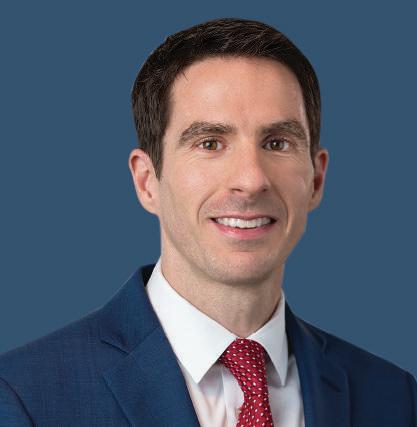
[The fi rm is] “enormously pleased” [with the SEC’s decision – it is a] “win for investors”
GERARD O’REILLY, DIMENSIONAL
potential con icts of interest between share classes and to ensure proper disclosures for investors. Currently, asset managers seeking to launch an ETF must create a new fund from scratch and cannot market it using the mutual fund’s track record. The new approach would allow managers to port over performance histories, potentially
leveling the playing eld between mutual funds and ETFs.
There is no shortage of interest from asset managers. According to the SEC, about 80 applications similar to Dimensional’s are pending. The agency has indicated that once the rst approval is nalized, subsequent applications are likely to move forward quickly.
Schwab pays damages in lawsuits linked to RIA that sold
A THREE-PERSON FINRA arbitration panel this month found Charles Schwab & Co. liable for damages to investors in a claim that involved complex products and a registered investment advisor that used Schwab to custody its assets. Schwab on September 15 was ordered to pay $165,440 in compensatory damages to Timothy Washburn, the client of Vora Wealth Management, a defunct RIA in Arizona whose founder, Dharmesh Vora, made big bets on
structured notes tied to four NASDAQlisted stocks and lost millions of dollars of client money along the way. It was the second such decision to go against Schwab this year.

IN A letter sent September 18 to Treasury Secretary Scott Bessent, Senator Elizabeth Warren, Congresswoman Maxine Waters, and Congressman Andy Kim questioned the decision to delay the compliance date for the Financial Crimes Enforcement Network’s (FinCEN) investment advisor anti-money-laundering (AML) rule.
The rule, nalized in August

last year, was set to take effect January 1, 2026. But the Treasury Department announced last month that the deadline would be pushed back two years to January 1, 2028.
The lawmakers argue that the delay leaves a signi cant gap in US nancial safeguards.
THE CFP BOARD has announced six public policy priorities intended to guide its advocacy efforts and shape the future of the nancial planning profession.
The priorities aim to strengthen standards, expand access to nancial advice, and protect consumers at a time when many Americans face increasing nancial complexity.
“CFP Board’s priorities re ect our unwavering commitment to the public interest and to advancing the nancial planning profession,” said CEO Kevin Keller.

THE SEC has approved a set of cost-cutting measures for the Consolidated Audit Trail, the massive trade-tracking database at the center of a years-long dispute between regulators and the nancial industry.
The decision comes just months after a federal appeals court struck down a proposed funding model for the system previously put forward by the SEC,

leaving the future of its financing in question.
The new SEC order handed down recently grants conditional exemptive relief to the self-regulatory organizations that operate the Consolidated Audit Trail, or CAT, allowing them to scale back certain requirements and reduce operating expenses.
THE UNENVIABLE label of “sandwich generation,” once exclusively ascribed to Gen Xers squeezed between the needs of aging parents and dependent children, now also applies to younger American adults, new studies suggest.
New research from Ameriprise Financial and BMO finds that financial interdependence now stretches across multiple generations, with parents, grandparents, and even young adults all navigating a complex web of support that is reshaping retirement planning.

According to Ameriprise’s Parents & Finances study, more than one-third of parents (36 percent) worry that financially supporting adult children could jeopardize their own retirement plans.
GENERATION X is entering the home stretch before retirement, but many are worried they won’t be financially ready.
According to Allianz Life’s 2025 Q3 Quarterly Market Perceptions Study, concerns about inflation and market turbulence are weighing heavily on this cohort, now mostly in their late 40s and 50s.

Only 19 percent of Gen X investors say now is a good time to put money in the market, a sharp drop from 30 percent in the prior quarter and the lowest of any generation surveyed. By comparison, 39 percent of Gen Z, 36 percent of millennials, and 29 percent of baby boomers see opportunity in today’s market.
A NEW survey from Empower shows a growing number of employers are preparing to offer private market investments – such as private equity, private credit, and private real estate – within defined contribution retirement plans.
The findings reflect a broader shift in the retirement landscape, with plan sponsors, advisors, and participants expressing increased
interest in expanding access to these asset classes.
According to the survey conducted by The Harris Poll, 98 percent of plan sponsors reported a high to moderate understanding of private market investments. More than half – 54 percent – said they expect participants would be enthusiastic about having access to these options.
SHERWIN-WILLIAMS recently revealed its decision to suspend its 401(k) match starting next month, a company contribution that reportedly reached up to 6 percent. For employees, both at the paint manufacturer and elsewhere, it is a sharp reminder that even core workplace benefits are not guaranteed.
For advisors, however, it’s a cue to prepare clients for such retirement uncertainties, like when their benefit plans shift.
Teddy Awuah, senior retirement plan consultant at Prime Capital Financial, highlights the importance of “strong plan design.” In his view, employers need to create plans that enable employees to reach their retirement goals, even without an employer match.
“Behavioral finance teaches us that participants often benefit from a nudge to save appropriately. Features like
American dream has a
A NEW survey from US Bank suggests that even as Americans make prudent financial decisions, many are struggling to achieve long-term goals such as homeownership and retirement, with younger generations feeling the sharpest impact from economic pressures. The US Bank 2025 Wealth Report, which surveyed 5,000 adults, reveals a growing sense of powerlessness among Americans when it comes to major life milestones. While 90 percent of respondents said they feel in control of day-to-day financial tasks, more than half reported
auto-enrollment and auto-escalation, set at levels that encourage employees to save 10 percent to 15 percent of their income, can effectively overcome a lack of employer contributions,” Awuah says.
Todd Feder, senior retirement plan consultant at Girard, a Univest Wealth division, believes auto enrollment and auto escalation continue to be the two most impactful drivers of secular change in employee behavior. According to Vanguard, plans with auto enrollment experience a 93 percent participation compared to 66 percent for those without.
“Employers say they want the best for their employees, but they often shy away from these provisions. For those that do, they need to step back and reflect on whether the decision criteria to exclude these provisions is based on something other than the
feeling powerless over broader forces such as the economy and political climate. These anxieties are shaping key life decisions.

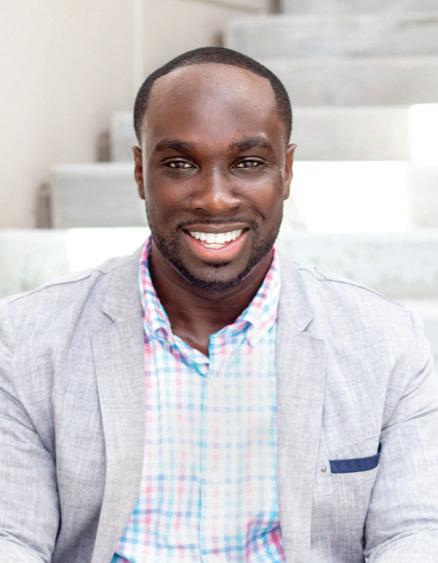
“Behavioral finance teaches us that participants often benefit from a nudge to save appropriately”
TEDDY
AWUAH, PRIME CAPITAL FINANCIAL
desire to drive participant outcomes,” Feder says.
Feder adds that recordkeepers are also “getting smarter” and leveraging AI to deliver just-in-time messaging, alter suggested savings levels, or tailor enrollment content to specific demographics, such as those based on age.
While it’s always smart to take the “free money” from a company 401k match, it’s imperative to maintain flexibility and control by making your own personal retirement plan contributions, according to Owen Malcolm, managing director at Apollon Wealth Management.
GEN X workers are the least confident about retirement readiness, even as younger savers express optimism and employers grow more skeptical, according to BlackRock’s latest Read on Retirement report. According to the report, just 54 percent
For younger workers, he says funding a Roth IRA is usually the best route to not being overly reliant on company retirement plan benefits, whether it’s pensions, 401k plans, or healthcare.
For older workers with less time to recover from the loss of a 401k match, he admits there are no easy answers.
“If the employee can’t make up the lost contributions from the 401k match out of their own cash flow, hard decisions may have to be made: scaling back retirement spending, delaying the timing of retirement, or even working part time in the early retirement years,” Malcolm says.

of Gen X respondents say they are on track to meet their retirement goals –the lowest of any cohort. Meanwhile, three-quarters (76 percent) of Gen Z feel on pace despite nearly one-half saying student debt is crowding out their ability to make contributions.
The survey also shows fresh evidence of the persistent gender gap in retirement, with 84 percent of men feeling secure about their savings versus 73 percent of women.
THE IRS has finalized regulations implementing key provisions of the SECURE 2.0 Act, including new requirements for catch-up contributions in workplace retirement plans.
The rules set out how plan sponsors and administrators must
handle after-tax Roth catch-up contributions for higher-earning participants, as well as increased contribution limits for certain age groups.
“The final regulations provide guidance for plan administrators to implement and comply with the new Roth catch-up rule and reflect comments received in response to the proposed regulations issued in January,” the IRS announcement read.


AFFLUENT AMERICANS approaching or in retirement are balancing market turbulence with the need for reliable income, creating a window of opportunity for advisors to strengthen relationships.
A poll conducted among more than 1,500 investors at least 50 years old and with at least $250,000 in investable assets revealed that three-quarters are
SOCIAL SECURITY recipients are likely to see a modest cost-of-living adjustment next year, with the Senior Citizens League projecting a 2.7 percent increase for 2026.
The estimate, based on recent inflation data, suggests that retirees’ benefits will rise slightly more than this year’s 2.5 percent adjustment
uneasy about how recent volatility might affect their retirement income.
The Janus Henderson Investors’ 2025 Investor Survey – Retirement Income and Planning found similar results; half of respondents said they checked their accounts more frequently following the sharp downturn triggered by April’s tariff announcements.

but will fall short of the 3.2 percent increase seen in 2024.
The Virginia-based advocacy group’s latest projection would translate to an average monthly benefit increase of $54, raising the typical payment for retired workers from $2,008 to $2,062.

AFFLUENT HOUSEHOLDS remain the driving force behind charitable giving in the United States, according to new research from Bank of America and the Indiana University Lilly Family School of Philanthropy.
The newly released 2025 Bank of America Study of Philanthropy shows that high-net-worth Americans account for a substantial and growing share of the nation’s philanthropy, with their average household donations exceeding $33,000 in 2024 – more than 10 times the average for US households overall.
FAMILY OFFICES are sharpening their governance frameworks and expanding their global presence, ac-
advisors
AS INVESTORS increasingly seek low-cost, transparent investment options, ETFs are poised for continued growth.
In fact, Dave Abner, head of global ETFs and funds at Northern Trust Asset Management, predicts ETF
cording to a newly released report. The 2025 Global Family Office Compensation Benchmark Report from Agreus Group and KPMG Private Enterprise shows family offices continue to balance growth ambitions with risk-conscious wealth preservation.
Roughly 84 percent of participants receive a bonus: performance-based pay remains integral to compensation. Almost two-thirds earned more overall in 2024/25 – due to inflation in 40 percent of cases, while 27 percent cited personal performance and 14 percent said it was because of overall business performance.

inflows could double over the next decade, and he’s been sharing with InvestmentNews how advisors can keep up with this exponential growth.
“Even though ETFs have been around for more than 30 years, there are still a lot of investors who haven’t migrated their portfolios from mutual funds to ETFs,” Abner said. “Advisors can work on educating clients about the differences between the products now and then migrate portfolios if appropriate for their clients’ needs.”
WHILE GIVING season hasn’t officially arrived yet, it’s a sure bet that financial advisors across the country are touching base with philanthropic clients to start talking about strategies for charitable giving. And in many cases, those discussions will touch on the sweeping One Big Beautiful Bill Act (OBBBA), which, according to one tax-planning leader, represents a unique opportunity.
“There’s a significant opportunity before the end of the year to take advantage and unlock some of these additional tax savings by accelerating charitable gifts,” says Bob Dietz, national director of tax research at Bernstein Private Wealth. “But it’s not across the board. You have to understand which clients and which taxpayers are going to be able to benefit from this.”
The Tax Cuts and Jobs Act introduced during President Donald Trump’s first term capped the SALT deduction at $10,000, regardless of marital status,
limiting clients’ ability to minimize their federal tax liability.
As more clients are now able to itemize deductions as a result of the OBBBA, which temporarily expands the SALT cap to $40,000, Dietz says the firm is proactively reaching out to clients to discuss possible tax-savings strategies. For those who are charitably inclined, he says conversations have involved potentially accelerating future gifts they intend to make into 2025.
“This may be the first year for some of them to itemize deductions in quite a while as a result of the Tax Cuts and Jobs Act,” Dietz says. “Now that they potentially have this additional $30,000 SALT deduction cap on the table, there’s a real possibility we’ll see a lot more clients itemizing, and as a result, they can finally take full advantage of larger charitable gifts. And so we’re looking at accelerating those into donoradvised funds.”
IT’S BEEN almost a month since TIAA Wealth Management announced a partnership adding a securities-backed line of credit to the services it offers.
And according to one of its leaders, that move benefits both sides of the advisor-client relationship.
“Clients are looking for help beyond investing. They are looking for a onestop-shop experience,” said Shankar Saravanan, senior managing director

and head of wealth products at TIAA. “We are also helping advisors so that they could add value more than their [investment] returns.”
While TIAA’s bread and butter has traditionally been around insurance and investments, securities-backed lending has become “table stakes” across the wealth industry.
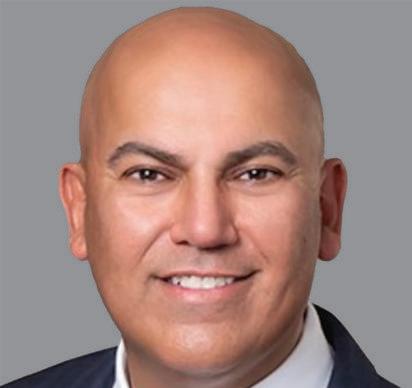
“Today, people have more wealth than ever before. Due to strong market performance this year, we have significant gains with no losses. Philanthropy efforts help us offset those gains”
MONISH VERMA, VARDHAN WEALTH MANAGEMENT
For Monish Verma, founding partner and CEO at Vardhan Wealth Management, conversations with clients around gifting go beyond just taking advantage of the temporary SALT expansion.
“Today, people have more wealth than ever before. Due to strong market performance this year, we have signi cant gains with no losses,” Verma says. “Philanthropy efforts help us offset those gains. We’re having more conversations with our clients’ trusted advisors, like CPAs, to strategize.”
The new tax law also introduces a couple of limitations on charitable giving, according to Dietz. Starting next year, individuals will be faced with a 0.5 percent AGI oor on charitable deductions for individuals. Besides that, individuals at the top marginal tax bracket will see the overall limit for their itemized deductions get pushed down from 37 percent to 35 percent.
“By accelerating those gifts into 2025, you’re getting ahead of those new limitations,” he says.

A NEW survey from the CFP Board reveals nancial regrets have cost the typical Generation X American nearly $100,000 – a sobering gure as the generation raised on MTV and Saturday morning cartoons approaches retirement age.
The study, conducted in late July and early August, polled 941 Americans aged 46 to 64 with household incomes above $25,000.
The ndings of the report high-
light the enduring impact of early nancial decisions, with many Gen Xers now re ecting on the choices made during their formative years, a period marked by the rise of 401(k) plans and the challenges of the Great Recession.


MORGAN STANLEY is equipping its nancial advisors to be more knowledgeable in tax management and alternative investments, two key areas for sophisticated investors.
The wirehouse giant, which reported $5 trillion in client assets to end the second quarter, is rolling out that support alongside changes to the way it compensates its advisors.
The Tax Forward Investing Center and the Alternatives Investing Center, unveiled this week by Morgan Stanley Investment Management, are designed to provide advisors with resources, continuing education courses, and practical tools to better serve clients with complex nancial needs.
CHANGES IN compensation last year at UBS and LPL Financial Holdings’ acquisition of rival Commonwealth Financial Network this year are two big factors in why 2025 is seeing a rising tide of large teams of nancial advisors looking to work at new broker-dealers
or registered investment advisors, according to one industry recruiter. Add in Bank of America Merrill Lynch’s renewed appetite to compete and pay top-notch recruiting bonuses to advisors willing to join the Thundering Herd, and 2025 looks like a signi cant year for large teams – those with $1 billion or more in client assets – changing rms, said Louis Diamond. 2025 looks like the year of moving $1B
capital gains tax trap when making portfolio changes
WHEN ADVISORS make changes to a client’s portfolio, they can inadvertently trigger a tax event and it’s a common occurrence, according

to Erik Preus, group head of investment solutions at Envestnet.
“There are several common scenarios, and they’re all typically associated with portfolio changes,” he said, adding that this can often happen when a nancial advisor takes on a new client who expects portfolio updates.
“If the advisor isn’t careful about looking for unrealized gains or losses in the new client’s portfolio, then short-term capital gains could be triggered when they make those portfolio updates,” he said.
FIXED-INCOME ETFs is a market that is both large and still in its early stages of growth, according to Dhruv Nagrath from BlackRock, which recently reached a record $12.5 trillion AUM.
“It’s a market that is in a rapid growth phase,” Nagrath, director of the rm’s iShares Fixed Income Strategy team says. “It’s already a big market, a couple of trillion dollars globally … but it’s just scratching the surface when you think about the overall scale of the global xed- income markets.”
Despite volatility in recent years since 2020, the growth trend has been consistent.
“The impact of the rate hike shock and everything through those past ve calendar years that we’ve experienced, we’ve seen $200 billion a year go into the xed-income ETF industry,” he says, adding that 2024 was a record year, with
approximately $280 billion, and 2025 is looking like another banner year.
Nagrath is quick to point out that the shift in interest from mutual funds to ETFs isn’t limited to younger investors.
“It’s funny,” he says. “I do think that there are younger investors who have adopted ETFs writ large in a bigger way … but actually, surprisingly, it’s across the wealth, the advisor universe. It’s those young people and their parents, their advisors who are actually driving ows into ETFs.”
He stresses that the move is not “a wholesale rejection of mutual funds” but “an adoption and embrace of ETFs,” adding, “If I had to boil it down to three punchlines or ideas, I’d call it ef ciency, access, and outcomes.”
Among the attractive aspects of ETFs, Nagrath highlights their tax ef ciency and
RETAIL INVESTORS are pivoting back to US markets after two straight quarters of pulling away, suggesting growing con dence in the strength of the American economy, even as caution lingers at home.
Of the 10,000 investors surveyed across 12 countries, 38 percent now see the US as offering the best long-term returns, a 12-point jump from the previous quarter, which reverses earlier declines.
eToro’s latest Retail Investor Beat survey ndings suggest that exposure is climbing too, with

43 percent of investors now holding US assets, the highest since tracking began in early 2023.
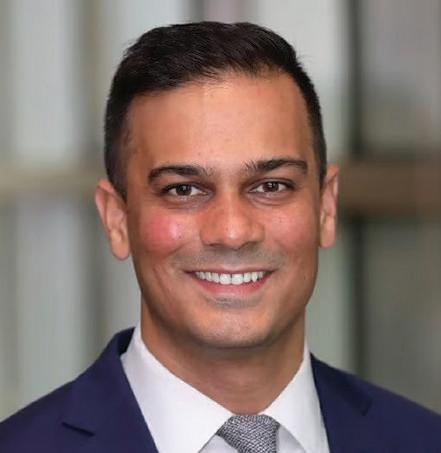
“It’s already a big market, a couple of trillion dollars globally … but it’s just scratching the surface”
DHRUV NAGRATH, BLACKROCK
cost effectiveness, which make these funds the wrapper of choice for anyone building a portfolio.
“Maybe it’s not as sexy as some of the other active parts of the market, but it’s remarkable,” he says. “Look, there’s $7 trillion sitting in cash. And I think there are a lot of investors out there who don’t know what fees they’re paying on their cash sweeps. Having money market fund ETFs now is just another great tool in the toolkit.”
“We see the bond ETF industry becoming a $6 trillion industry by 2030,”
Ellison – brie y –takes over as world’s richest person
LARRY ELLISON, co-founder of Oracle, brie y overtook Elon Musk to become the world’s richest person, according to the Bloomberg Billionaires Index, exceeding half a trillion dollars in net worth. Ellison’s net worth climbed to nearly $400 billion after Oracle’s
Nagrath says. “We’re quite bullish on the prospects.”
But despite the optimistic outlook, he urges advisors to be discerning.
“Just putting something in an ETF wrapper is not a guarantee of success,” he cautions. “Really do your due diligence on who is the manager that’s bringing this strategy to market. Do they have the scale? Do they have the operational platform? Can they handle huge volumes coming into the ETF and going out?”

shares soared more than 40 percent on Wednesday, propelled by robust demand for the company’s cloud infrastructure and arti cial intelligence services.
The surge in Oracle’s market value, which approached $1 trillion during the day’s trading, followed the company’s announcement of a $450 billion-plus backlog for cloud services and several multibilliondollar contracts with major AI rms, including Nvidia and OpenAI.
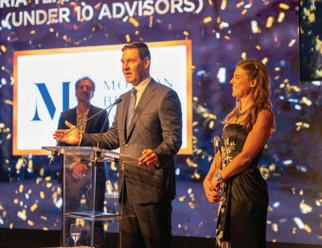
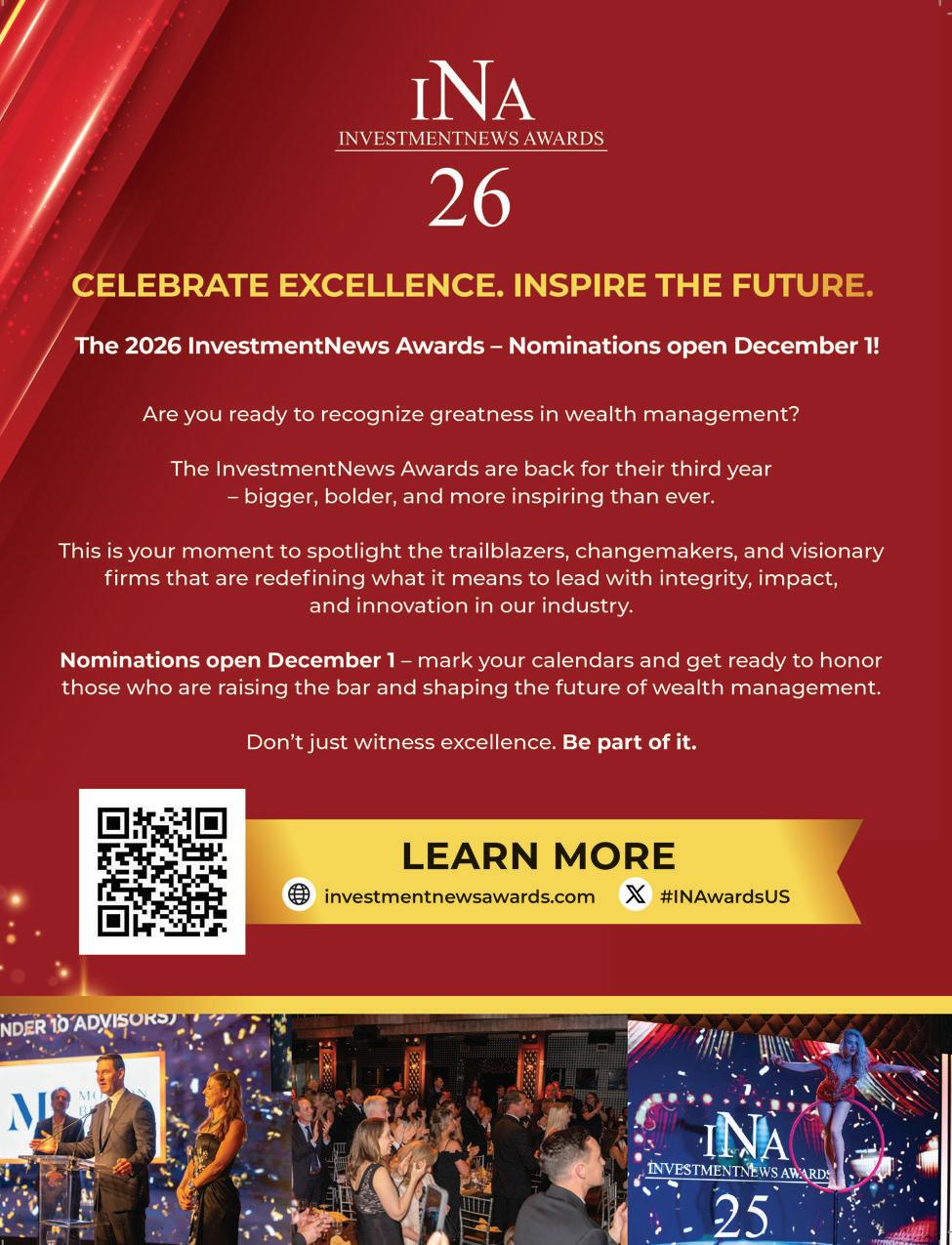
THE PUSH to let tokenized stocks trade along traditional securities has just gotten major Wall Street cred, with the Nasdaq seeking permission from the SEC to let investors trade tokenized versions of listed securities on its main bourse.
If approved, that would mark the first time tokenized assets
trade on a major US exchange and a notable test of blockchain inside the national market system.
The move comes amid a broad loosening of crypto regulations under Trump, prompting more traditional finance firms to support and even take steps to participate in tokenization.

WHEN YOU’RE the co-founder of a multi-family office managing assets of around $10 billion for ultra-highnet-worth clients, it’s no surprise to see certain recurring missteps by wealthy clients.
“One of the most common mistakes we see is misjudging liquidity and overcommitting to private investments,” Wes Karger of TwinFocus said.
“Many investors, particularly
AMERICANS’ EXPOSURE to equities has reached unprecedented levels, with both households and pension funds holding more stocks than ever before – a trend that is prompting economists and strategists to urge caution, even as markets continue to climb.
According to recent Federal

in the 2021 vintage, assumed past exit activity would persist, only to find themselves overconcentrated and constrained when liquidity slowed,” he said. “This limited their portfolio flexibility, philanthropy, and even family spending goals. We remind clients that private investments should complement, and not replace, a well-balanced portfolio and balance sheet.”
Reserve data, direct and indirect stock holdings – including those in mutual funds and retirement plans – now account for an all-time high of 45 percent of US households’ financial assets.
A report by Reuters highlighted that the share of equities in private sector defined contribution pension plans is approaching 70 percent, the highest in at least 75 years.


FRANKLIN TEMPLETON is entering a strategic partnership with three major institutional infrastructure investment firms – Actis, Copenhagen Infrastructure Partners, and DigitalBridge – in a move to expand private wealth investors’ access to infrastructure opportunities.
The recent collaboration reflects a growing trend among traditional asset
EVERY INVESTOR wants to get in on the “ground floor” of a great private investment. The key is, of course, making sure it doesn’t collapse underneath them once they put their hard-earned money into it.
As companies remain private for longer, direct private investments can offer exposure to innovative business-
WHILE PRIVATE market alternatives are becoming more widely adopted, their use remains uneven across distribution channels.
The 2025 Alts Leaders Survey from Alternative Investments Market Intelligence reveals that wirehouse and regional firms lead the field, combining higher client adoption rates with meaningful allocations, while independent broker-dealers and RIAs show a more fragmented landscape.
managers to seek partnerships rather than acquisitions as they look to diversify into private markets.
The alliance will focus on providing US advisors and their clients with exposure to high-growth infrastructure sectors, including energy security, electrification, digitalization, data centers, and renewable energy.

es and add much-needed diversity to equity portfolios. That said, private market assets don’t offer the same level of transparency or liquidity as public markets. And there’s the rub.
As a result, advisors say direct access may not be attractive for all investors. Even when it is suitable, it is imperative to work with a professional financial advisor who has experience investing in private markets.

Wirehouses report that 23 percent of clients use alternative investments, with an average portfolio allocation of 16 percent, translating into roughly 3.75 percent of total client assets.



















